Bremen Travel Guide: 21 Best Things To Do & See
Everything you need to know about Bremen in Germany, including what to do, when to visit and our best tipsA small big city
We instantly loved being in Bremen!
Despite being a relatively big city, it has a cosy small-town vibe with a more relaxed pace which we really enjoyed.
Bremen is compact and you can explore much of it on foot or by bike, yet it’s large enough to offer a variety of experiences: historic sites, vibrant neighbourhoods, green areas, museums, UNESCO World Heritage landmarks, old churches and a lovely coffee scene (+ lots of good food in general).
There’s something for everyone.
In this travel guide, we will walk you through the best things to do and see, how long to stay, along with practical tips to make the most of your visit to this delightful city.
Table of contents
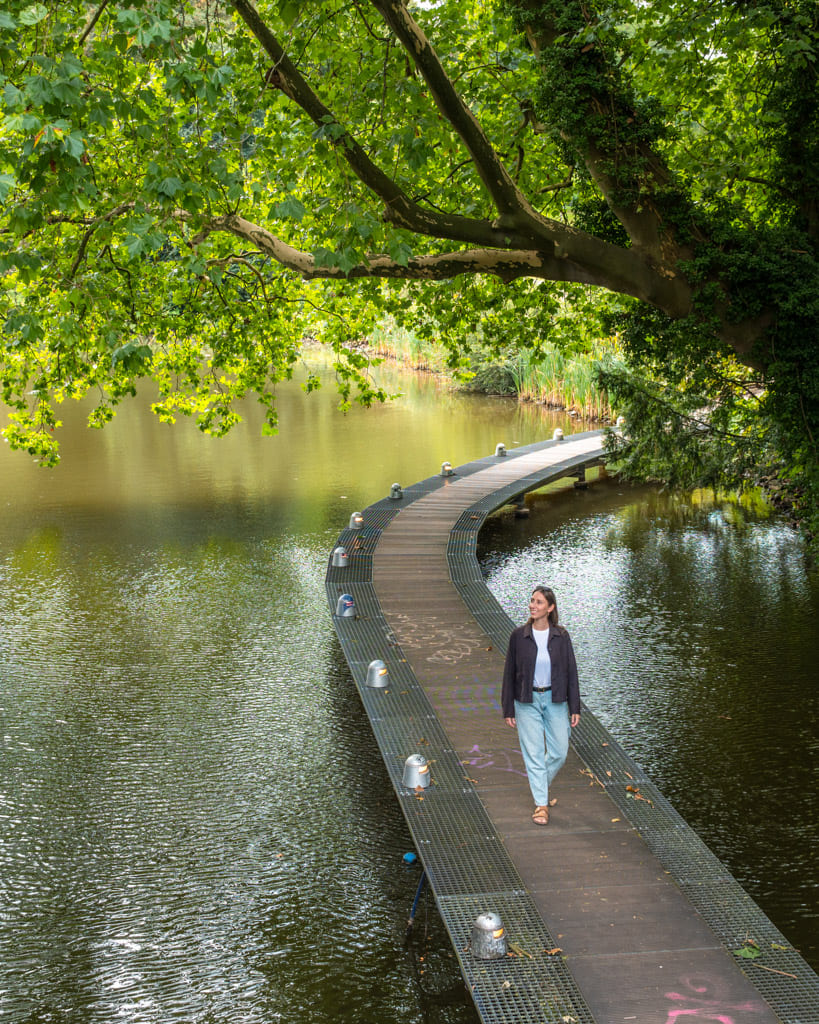

Where is Bremen?
Bremen is located on the River Weser in Northwestern Germany, about 60 kilometres (37 miles) south of the river’s mouth on the North Sea.
Bremen is the capital of the Free Hanseatic City of Bremen (Freie Hansestadt Bremen), a two-city state comprising Bremen and Bremerhaven.
After Hamburg, Bremen is the second largest city in Northern Germany with around 570,000 residents.
How long to stay in Bremen
How many days you need in Bremen depends on your personal wishes and circumstances.
We stayed for three nights and found it a good amount of time to fully experience the city without rushing.
If you’re on a tight schedule, you can see most of the highlights in one day as they are conveniently close to each other but 2-3 days will be ideal for most people.
That way, you will have time to enjoy the many green areas, strolls along the river and a museum or two.
With even more time, you can easily use Bremen as a base for exploring the surrounding region and visit nearby cities on day trips.

What to do in Bremen
Bremen is a compact city chock-full of great things to do – whether you visit at the height of summer where you can enjoy all the green areas or at a colder time where you can truly appreciate the medieval atmosphere and fascinating museums.
Here are the best things to do and see in Bremen:
- Bremen Town Hall (Bremer Rathaus) – Stunning town hall on the market square
- St. Peter’s Cathedral (Bremer Dom) – The city’s most important church
- Statue of the famous Town Musicians (Die Bremer Stadtmusikanten) – Unmissable city icon
- Statue of Roland – A symbol of Bremen’s freedom
- Böttcherstraße – A historic street
- Schnoor (Schnoorviertel) – Charming, narrow and colourful houses
- Schlachte – Beer gardens by the river
- Osterdeich – Relax along the Weser River
- Viertel – Bremen’s liveliest neighbourhood
- Street art – Art on the walls of Bremen
- Go on a city tour – See the city with a new perspective
- Wallanlagen Park (Die Wallanlagen) – Bremen’s old city walls
- Mühle am Wall – Picturesque old windmill
- Bürgerpark – Bremen’s green heart
- Botanika – Bremen’s World of Nature Discovery
- Coffee roastery tour – See how your coffee is made
- Universum Science Center – Interactive museum shaped like a whale
- Theater am Goetheplatz – Musicals, dramas and operas
- Kunsthalle Bremen – Art museum with European art
- Tour a beer brewery – Learn all about beer
- Übersee-Museum Bremen – A natural history museum
1. Bremen Town Hall (Bremer Rathaus) – Stunning town hall on the market square
On our trip to Bremen, we were really impressed by the Bremen Town Hall (Bremer Rathaus) – a UNESCO World Heritage site.
The building is a beautiful mix of Gothic and Weser Renaissance styles, pretty much dominating the market square in the middle of the city.
If you have the chance, see if you can join one of the guided tours to see the impressive interior as well.
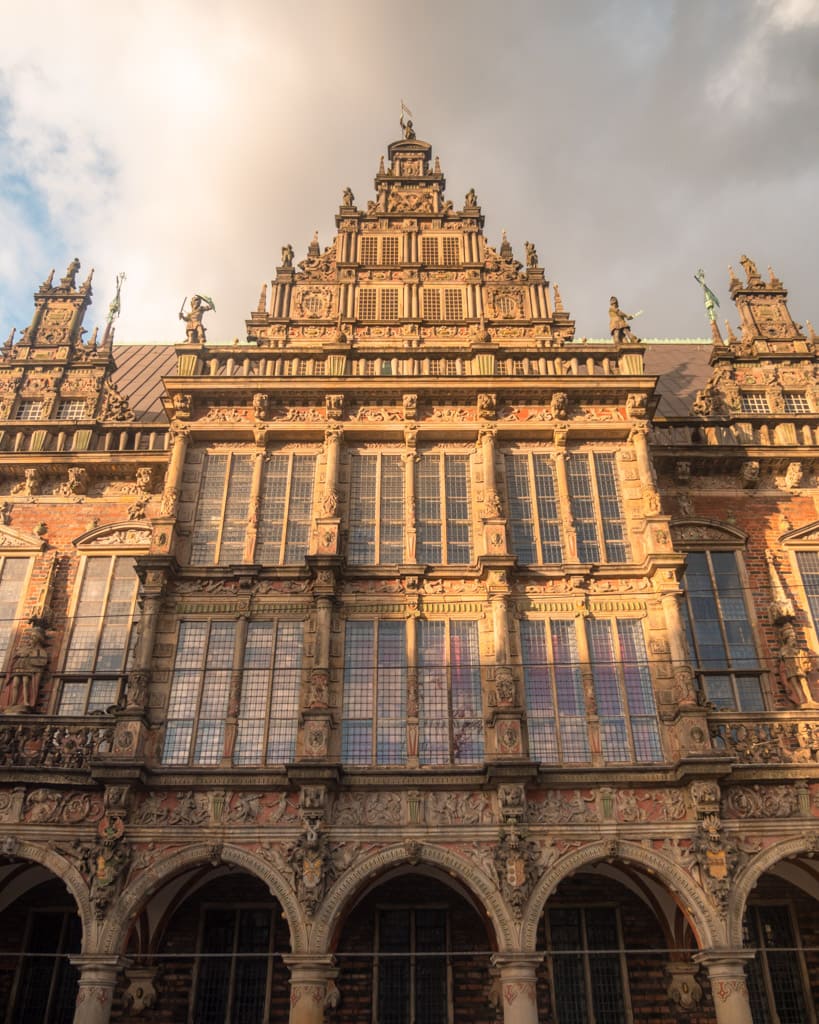

2. St. Peter’s Cathedral (Bremer Dom) - The city’s most important church
Germans are not only pretty good at building impressive city halls; they also know how to build darn big cathedrals!
Bremen Cathedral (Bremer Dom) welcomes visitors to the market square with its more than 90-metre-tall twin towers and imposing facade.
A church has stood here for more than 1,200 years (!). That obviously makes for a lot of history. To learn all about it, check out the museum inside the church.
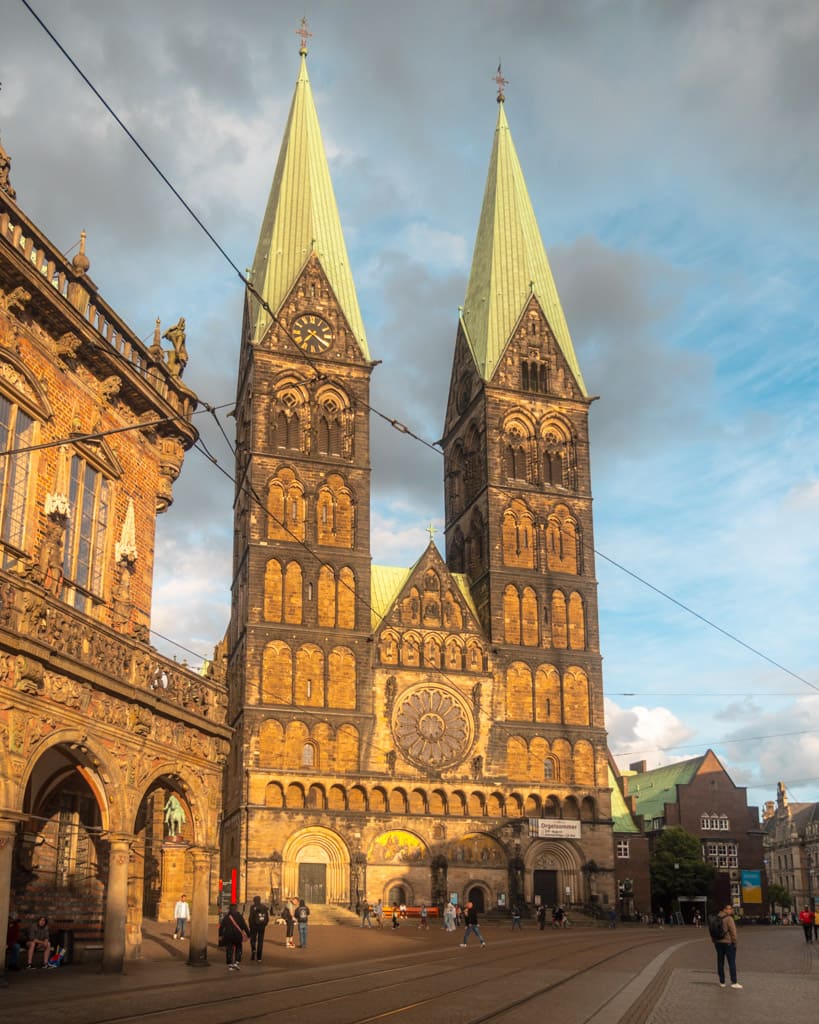
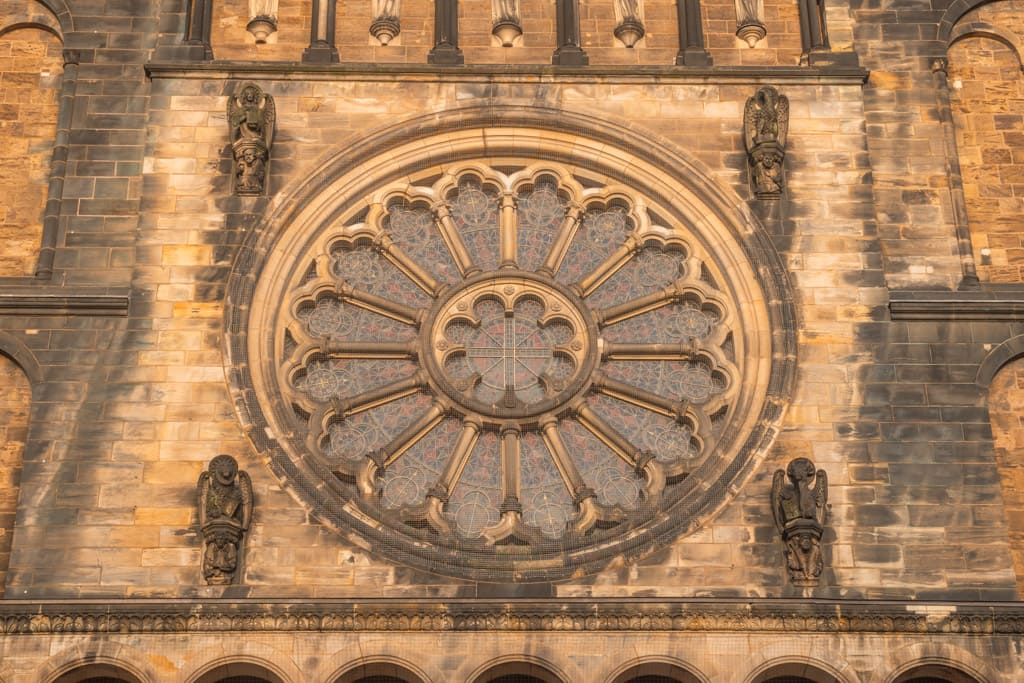
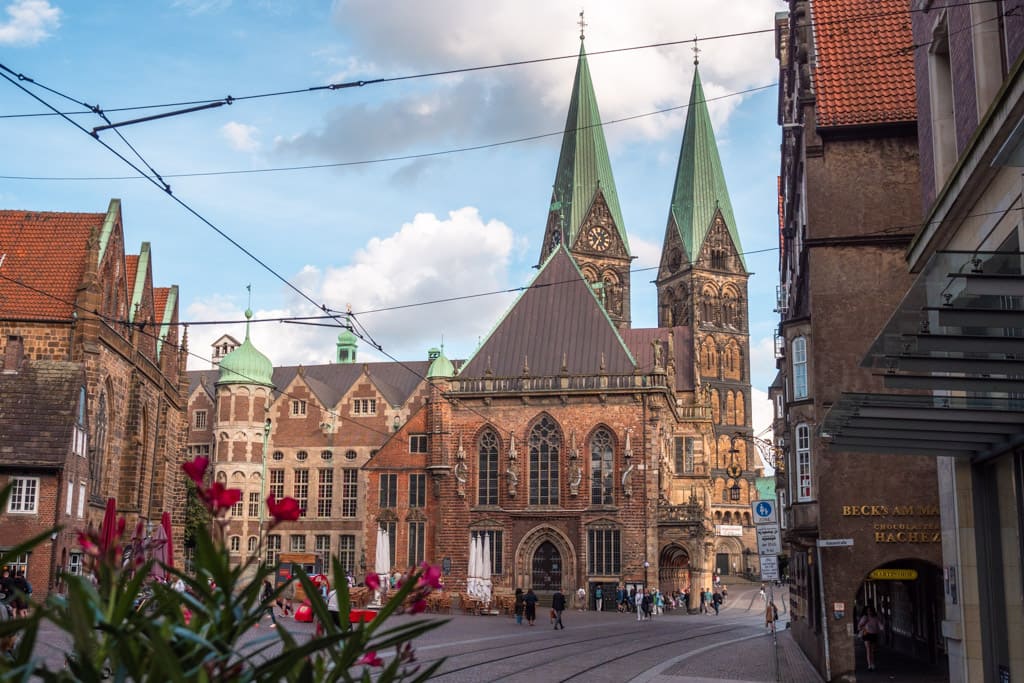
3. Statue of the famous Town Musicians (Die Bremer Stadtmusikanten) – Unmissable city icon
If you’ve ever heard of Bremen, it’s likely from the Brothers Grimm fairy tale “The Town Musicians of Bremen” (Die Bremer Stadtmusikanten).
Although the animals in the story never actually made it to Bremen, the donkey, the dog, the cat and the rooster stand proudly on top of each other right next to the Bremen Town Hall and is surely one of the city’s most beloved landmarks.
Naturally, it’s also a popular spot for photos with many tourists following the local tradition of rubbing the donkey’s legs for good luck.
If you follow suit, remember to rub both of them with both hands. Otherwise, it’s said that “one donkey is shaking the hand of another”!
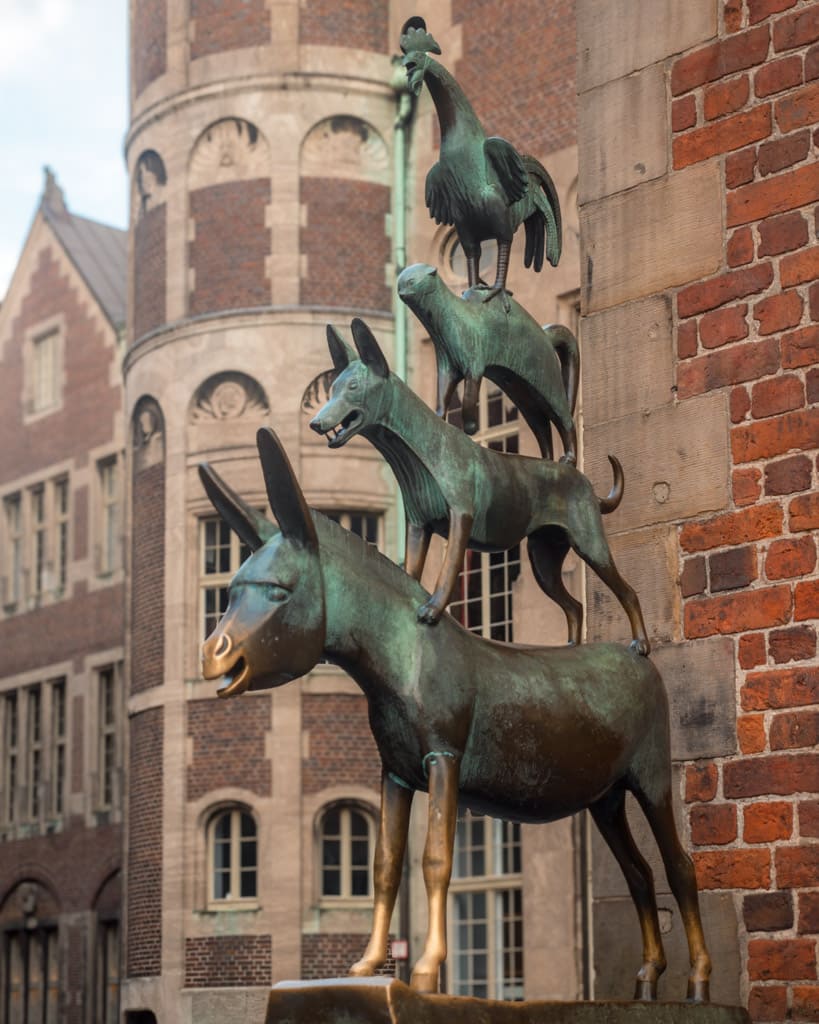
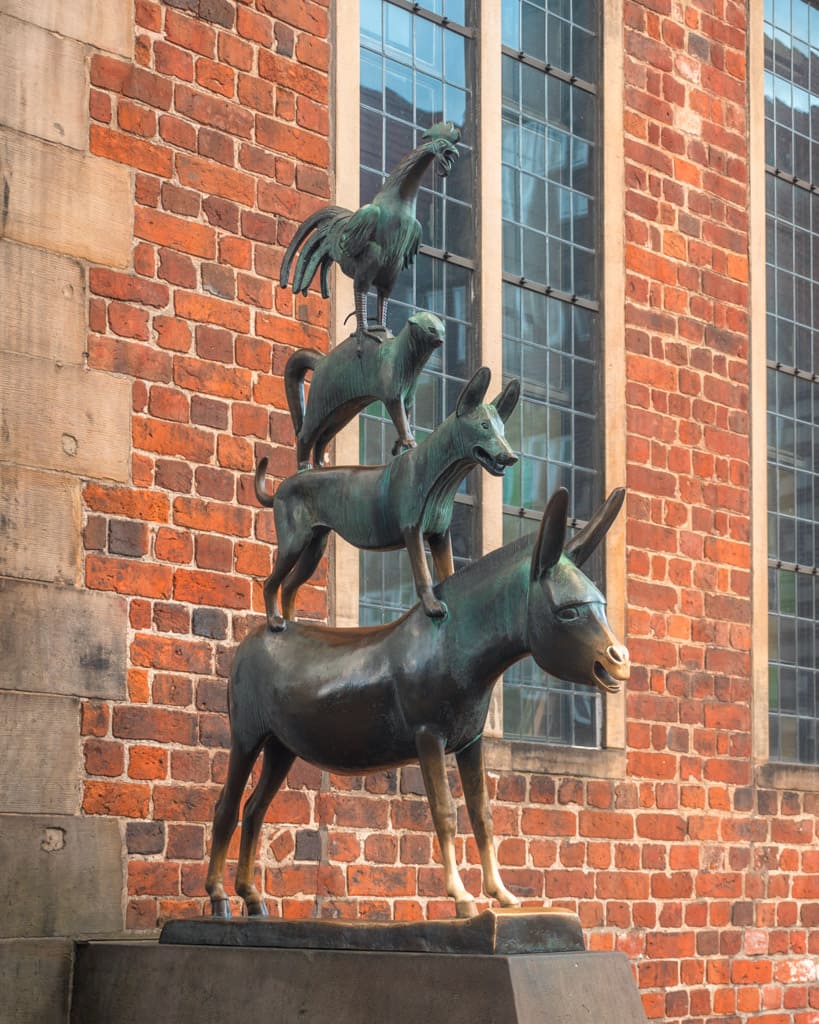
4. Statue of Roland – A symbol of Bremen’s freedom
Speaking of statues, the statue of Roland is also hard to miss on the market square.
The 5.5 metre tall, legendary knight is a symbol of Bremen’s freedom and is also included with the Town Hall as a UNESCO site.
Roland statues were commonly erected during the Middle Ages in German towns. With a total height of more than 10 metres, Bremen’s Roland is likely the largest and oldest surviving Roland statue.
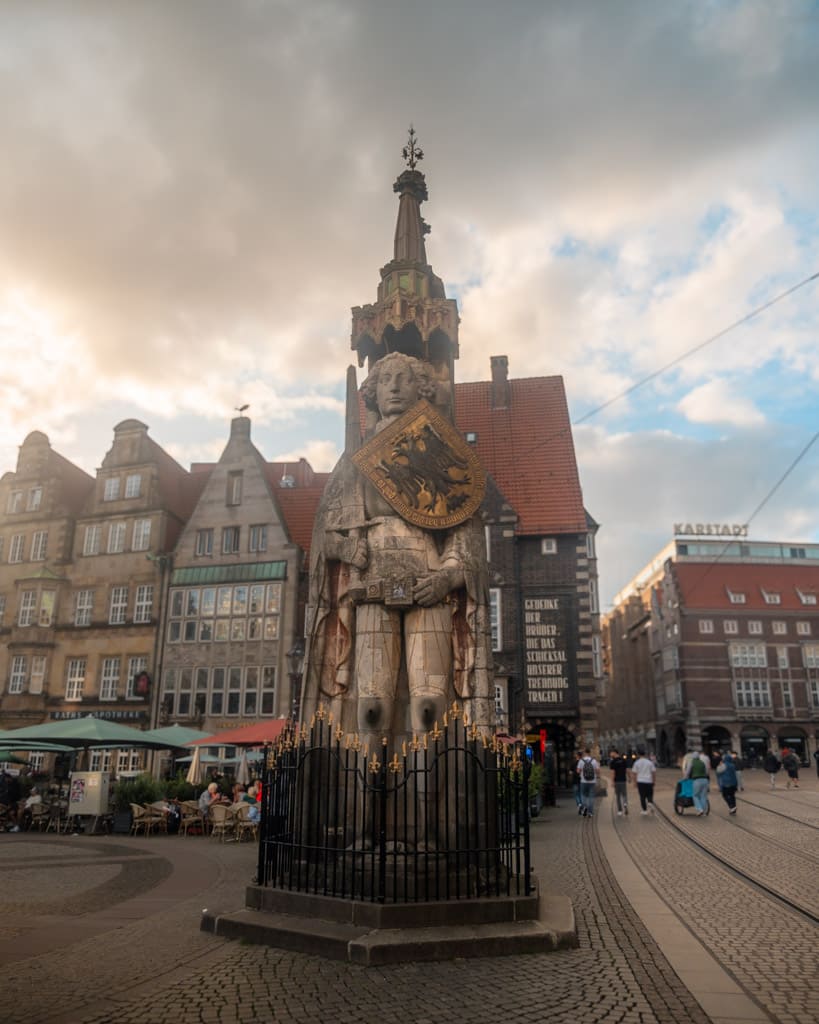

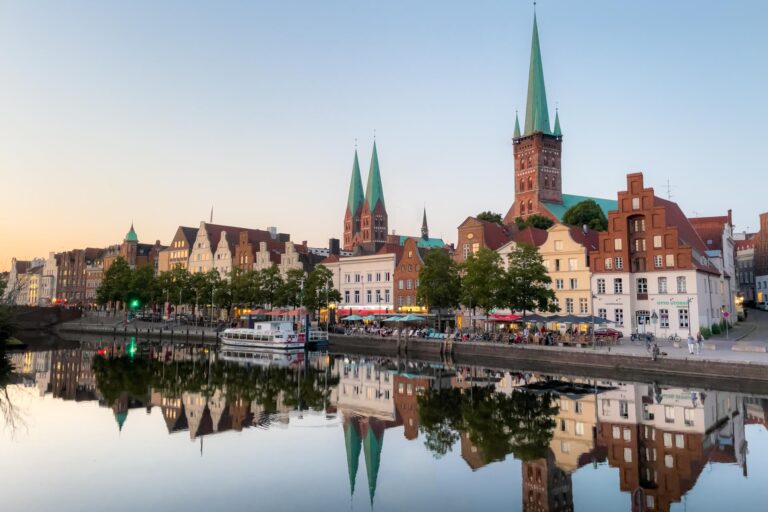
5. Böttcherstraße – A historic street
Böttcherstraße connects the Weser River with the market square and is a must-see in Bremen.
This narrow, car-free street is full of history and showcases a curious blend of architectural styles with a mix of Gothic and expressionist architecture.
We even visited twice as we really enjoyed the atmosphere.
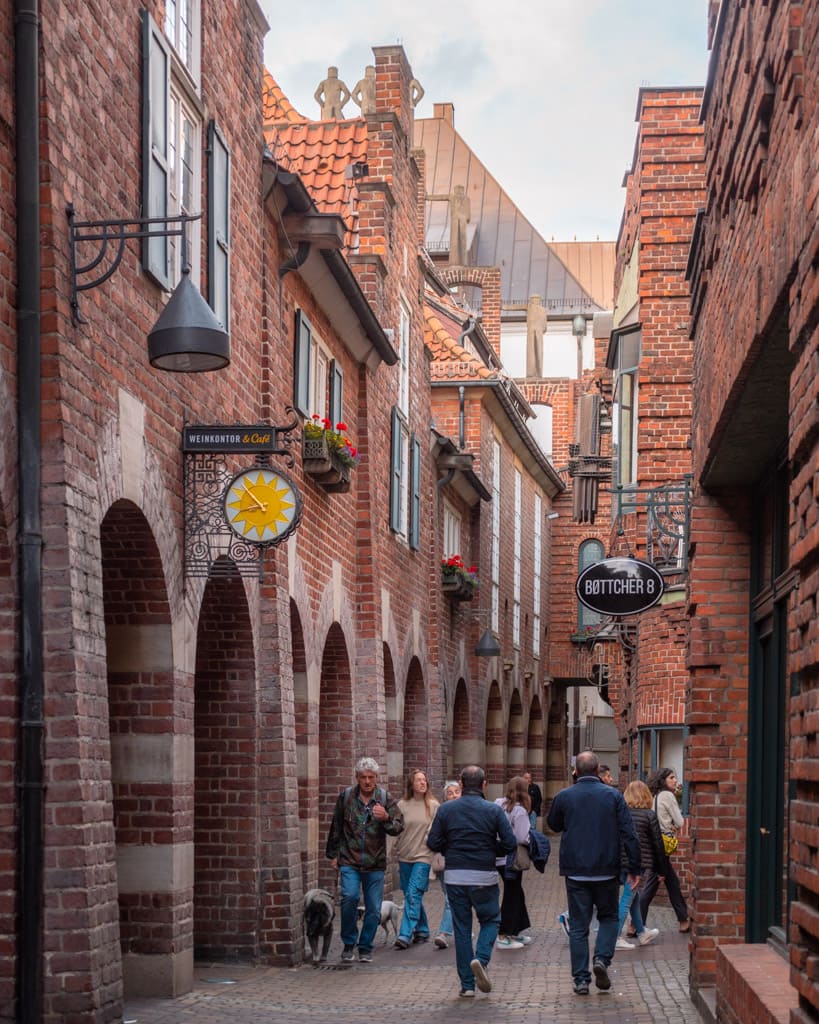

6. Schnoor (Schnoorviertel) – Charming, narrow and colourful houses
We absolutely loved the cute neighbourhood of Schnoor (Bremen’s oldest neighbourhood!) and wandered every street on two separate occasions.
The area is quite small and compact, but you can easily spend a few hours here walking down the winding lanes and exploring the cool artisan shops and small cafés.
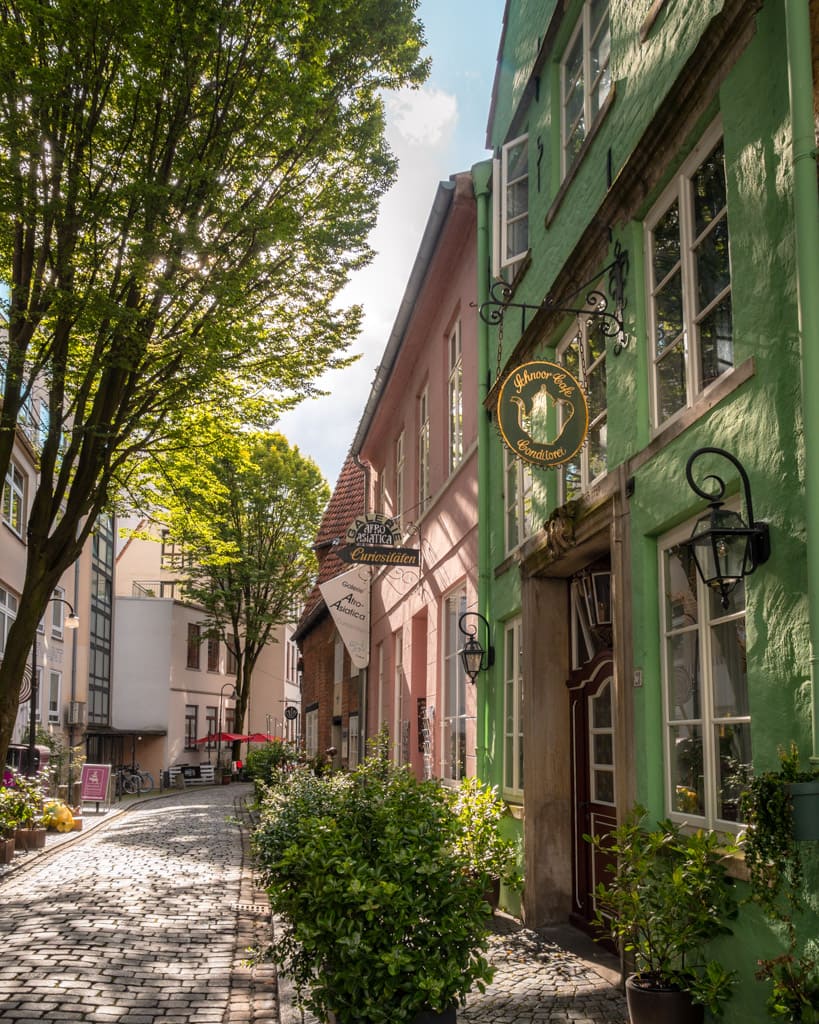
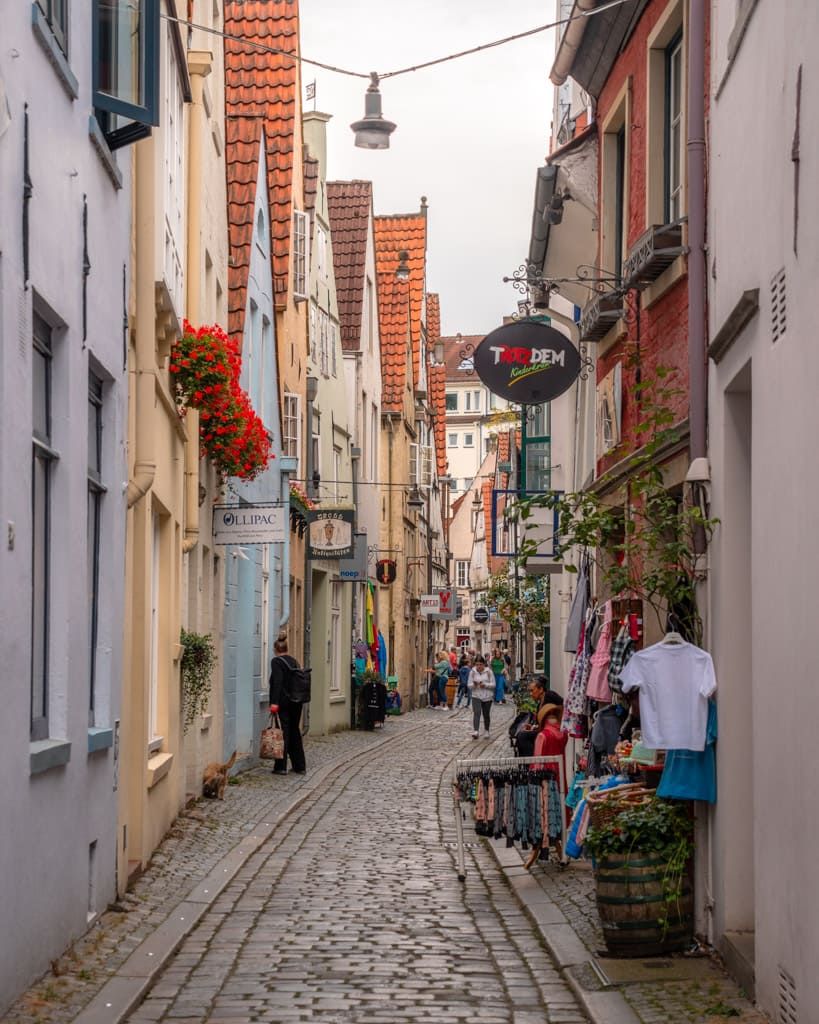
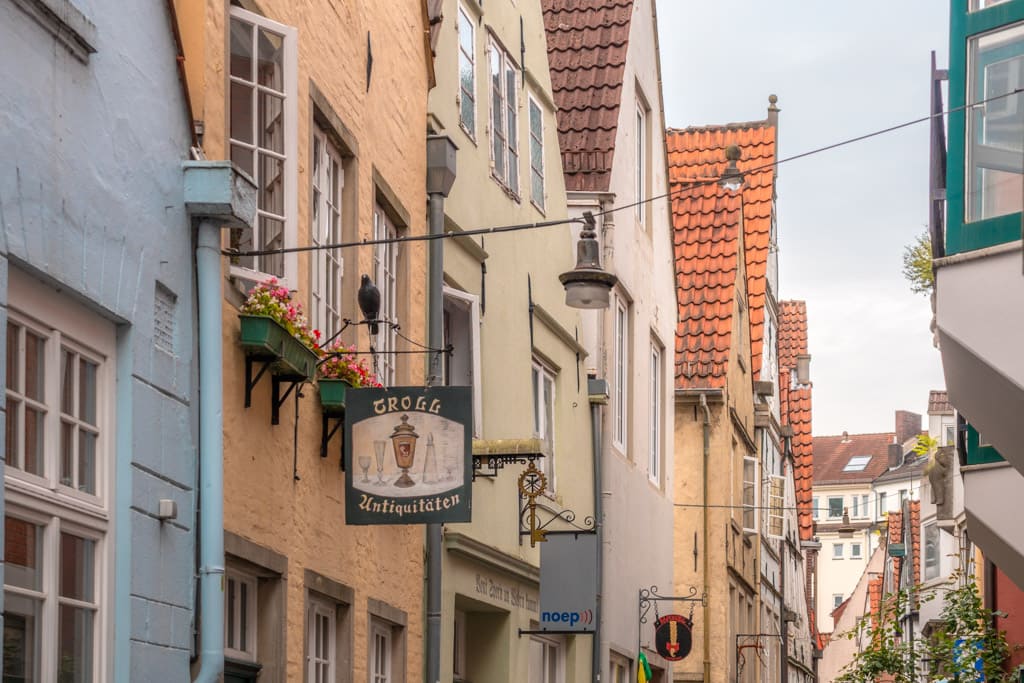
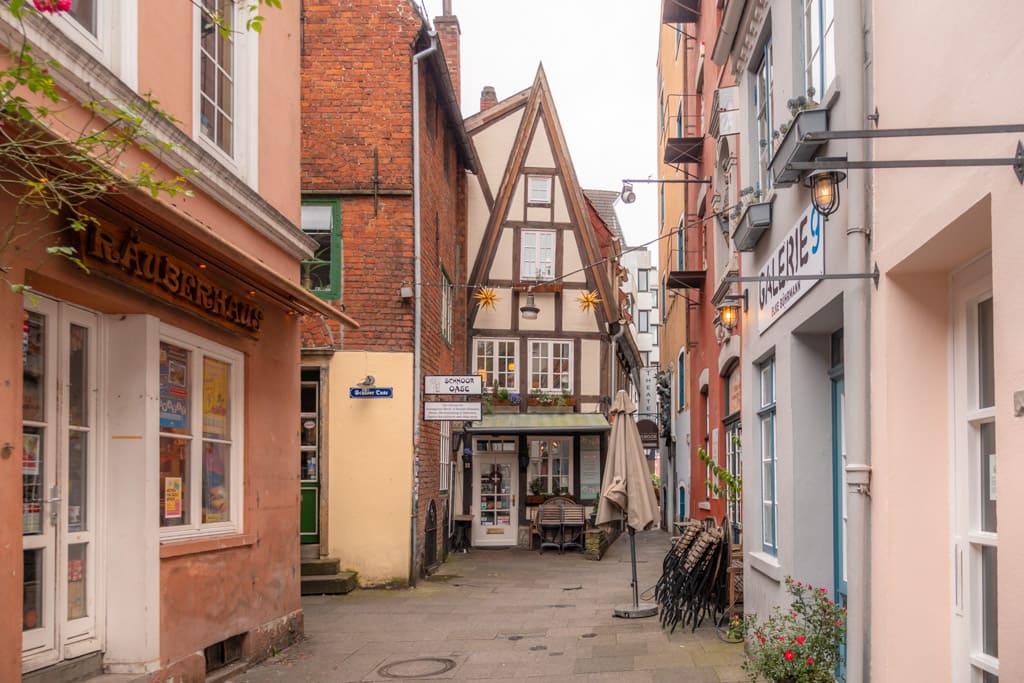
7. Schlachte – Beer gardens by the river
After checking out Schnoor, we followed the Weser River towards the waterfront area of Schlachte – a former harbour in the middle of the city.
The promenade is full of beer gardens, bars and restaurants – many of which have great views over the river.
At night Schlachte becomes a hot spot for locals and tourists alike who enjoy the maritime atmosphere.

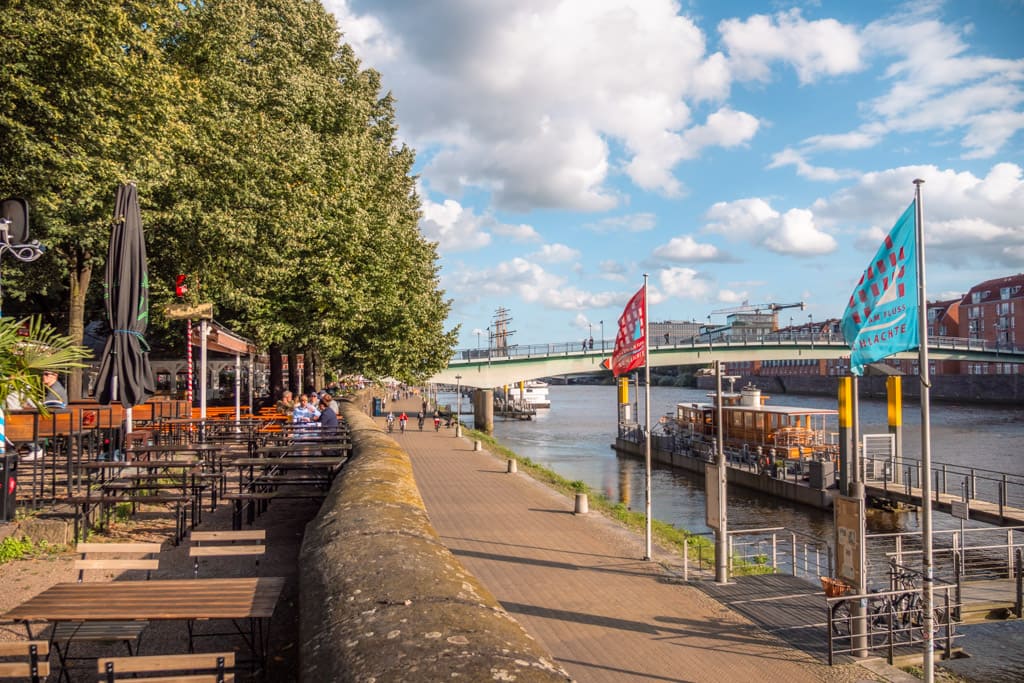

8. Osterdeich – Relax along the Weser River
For a relaxing stroll in Bremen, it’s hard to beat the Osterdeich.
Stretching for about 4 kilometres southward from Schlachte, the dyke is one of the city’s favourite places for jogging, cycling and BBQs.
We walked (and cycled) here on several occasions and really appreciated having such a serene spot right next to all of Bremen’s top attractions.
From the Osterdeich, you can also take the Sielwall ferry (Sielwallfähre) to easily go to the beach on the opposite side of the river.
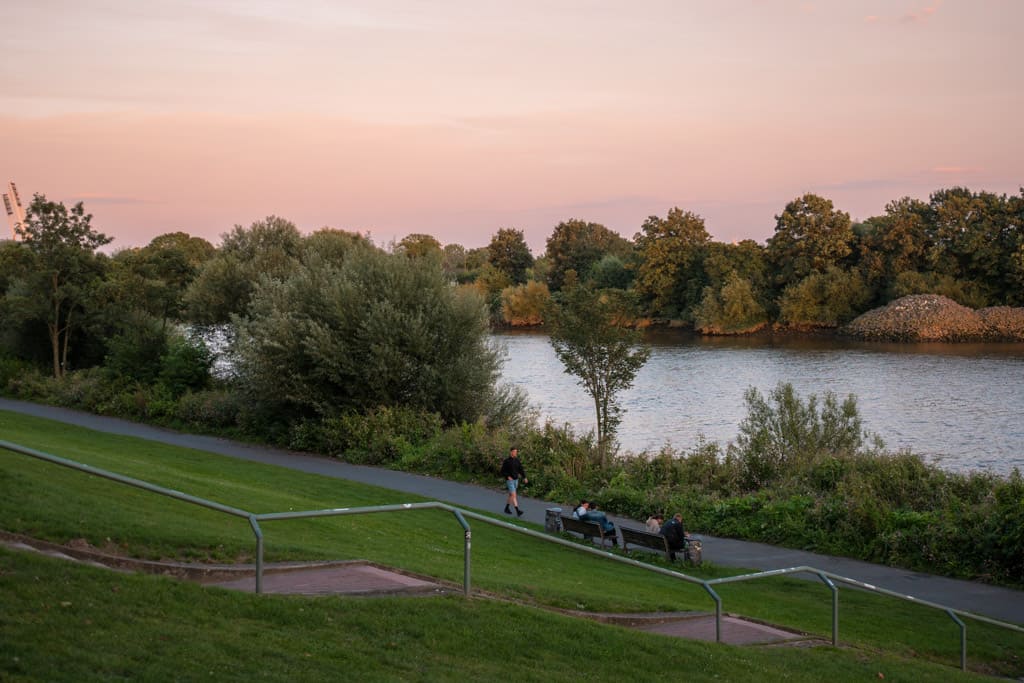
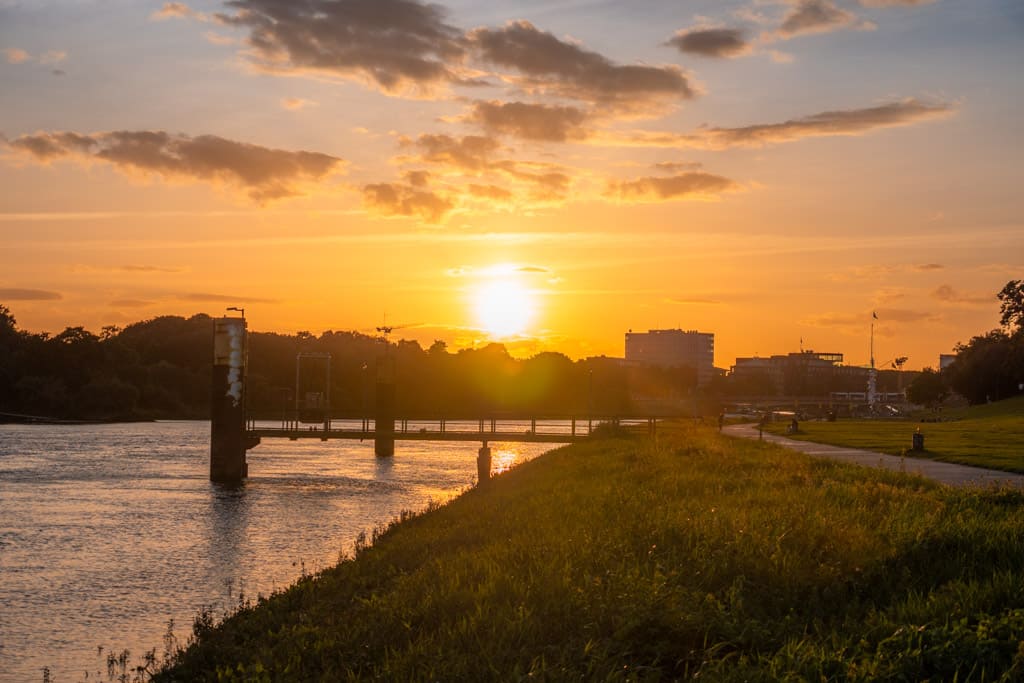
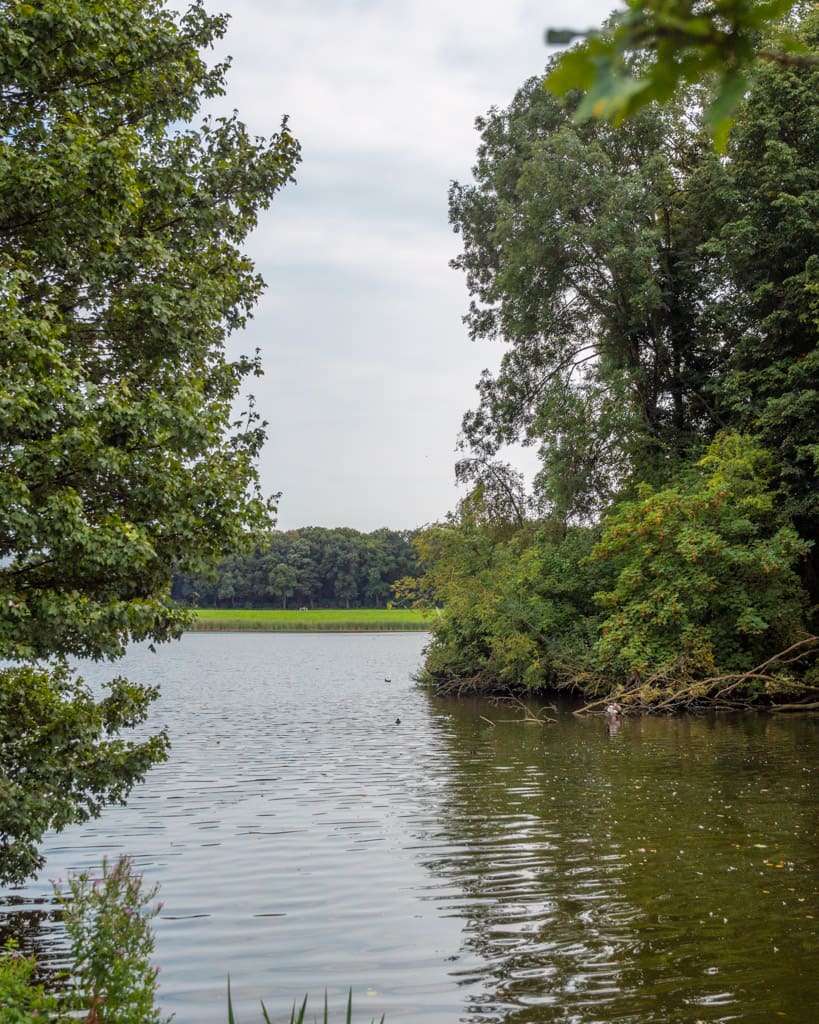

9. Viertel – Bremen’s liveliest neighbourhood
When we visited Bremen, we stayed in The Viertel (Das Viertel) – translating into “the quarter”.
As the name suggests, it’s very much an “it” place where many young people hang out, eat and drink at the cool bars and cafés.
It was perfect staying here for us as it’s a very veggie-friendly part of town with lots of vegan and vegetarian options.
Even if you don’t come here for the food options, it’s a really cool neighbourhood to just stroll around to catch the vibe. Especially after sunset!
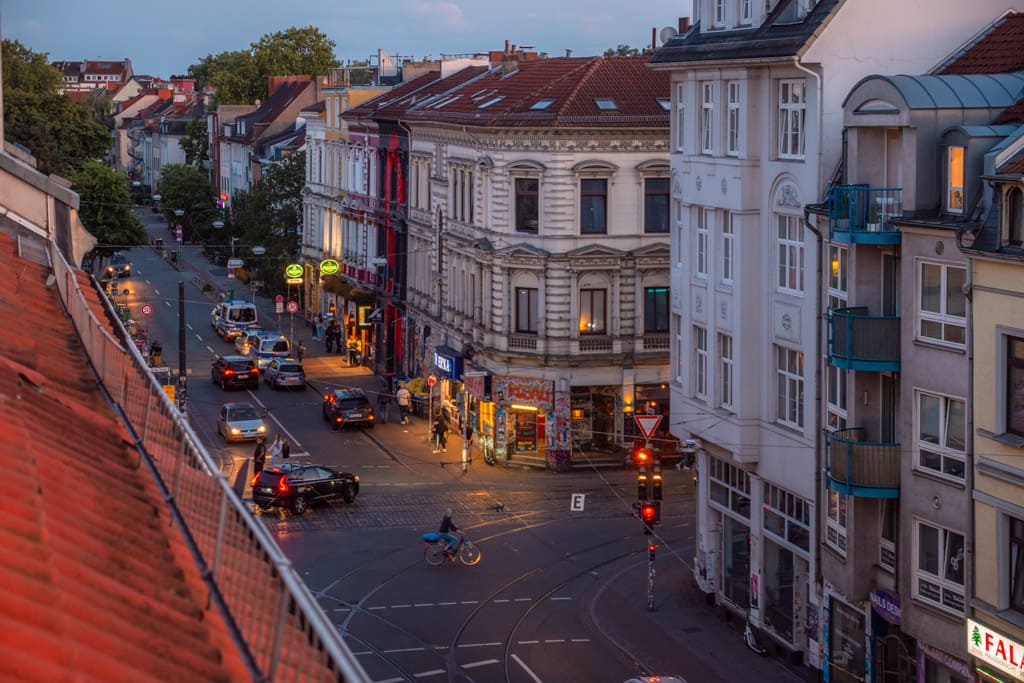
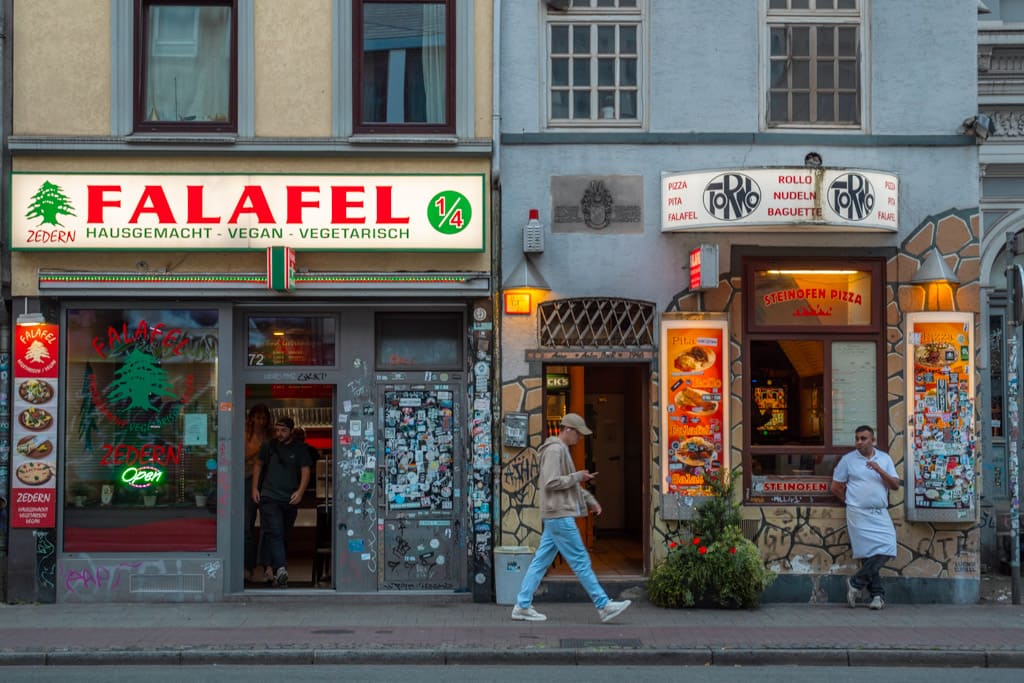
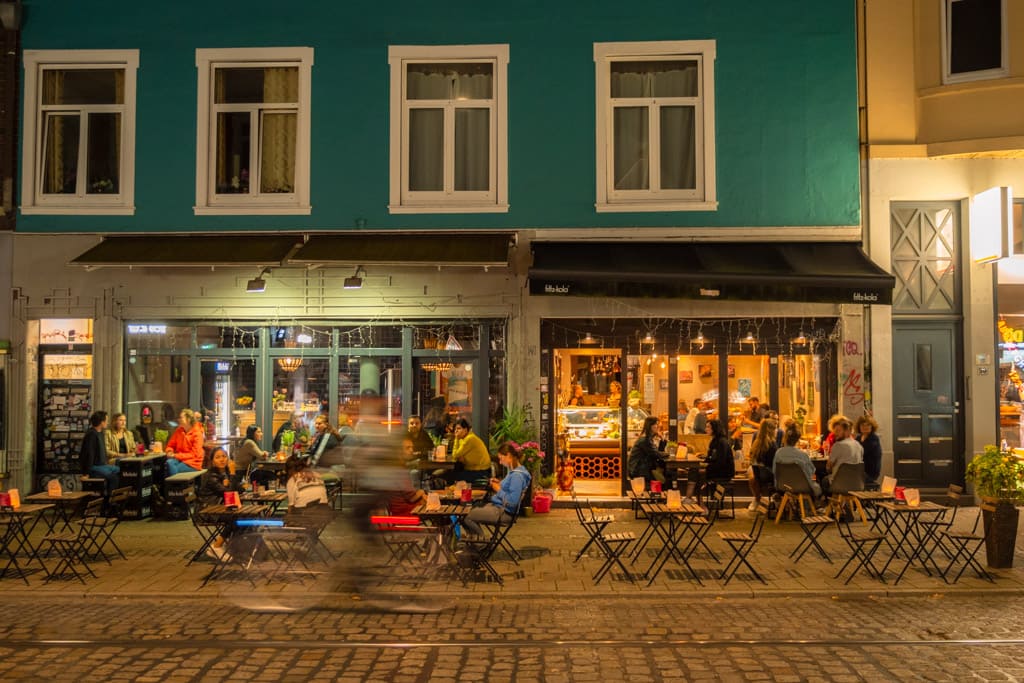
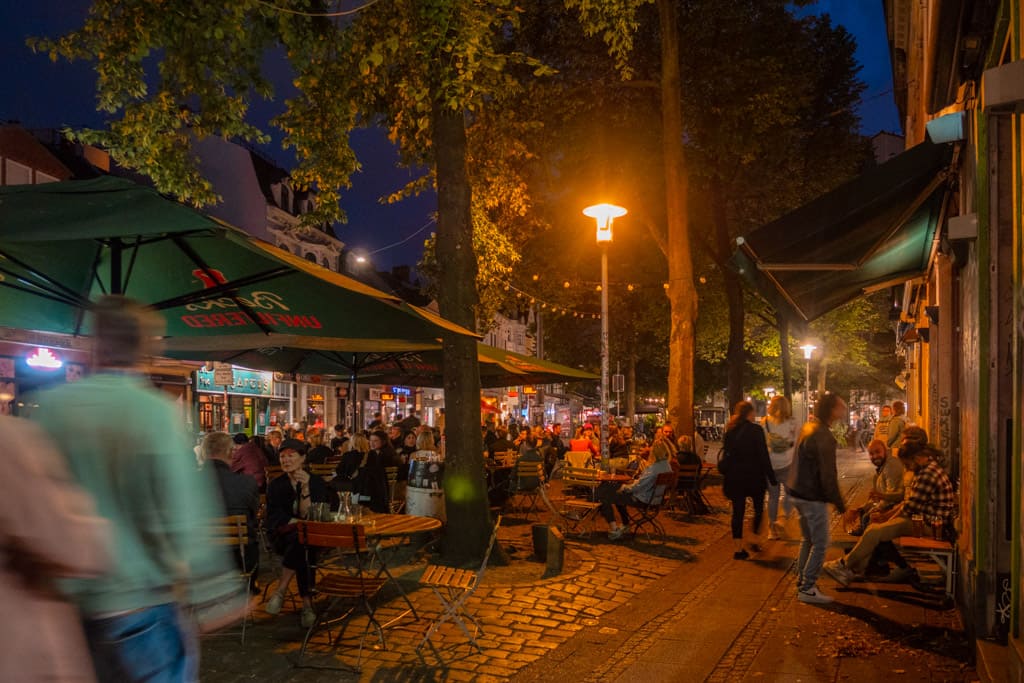
10. Street art – Art on the walls of Bremen
Bremen is a creative city which is also evident from some of the commissioned (as well as uncommissioned) art pieces on walls around town.
The aforementioned Viertel is a good place to start but there is actually street art all over. Happy hunting!
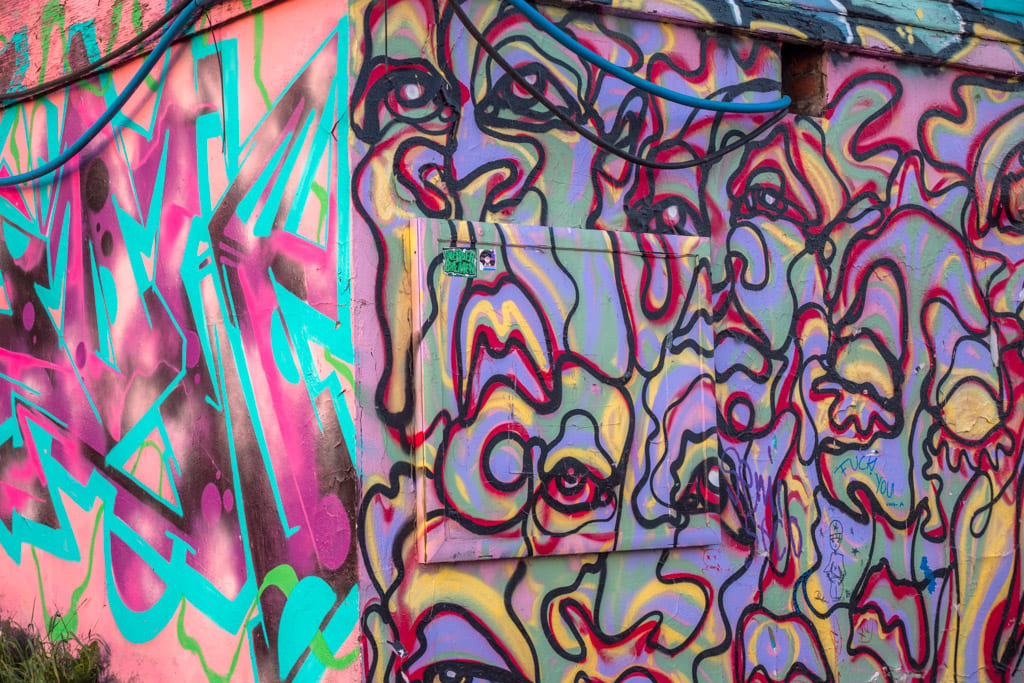
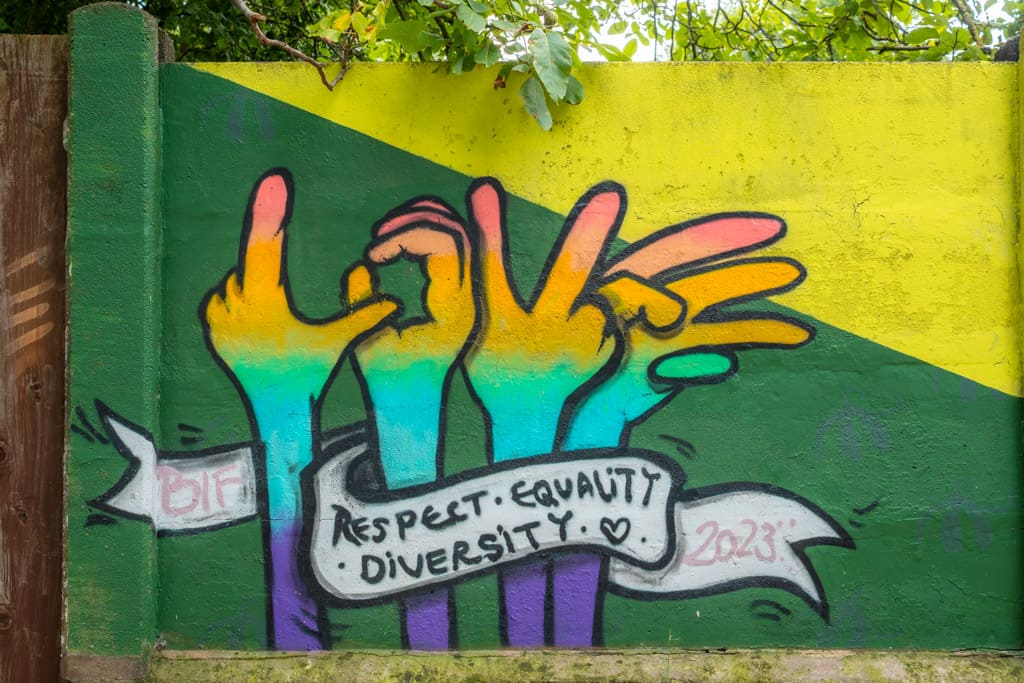
11. Go on a city tour – See the city with a new perspective
Going on a guided walking tour around Bremen can be a great way to appreciate its history and discover hidden gems.
We went on a picturesque tour and saw the classical highlights of the market square, the Schnoor area as well as some of the Schlachte Embankment.
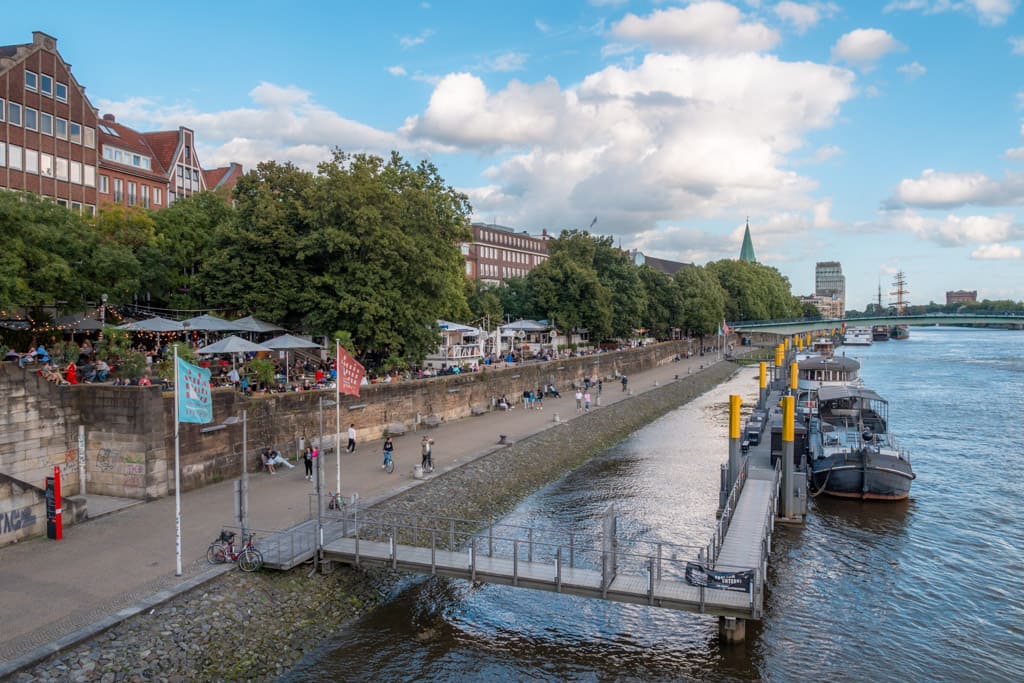
12. Wallanlagen Park (Die Wallanlagen) – Bremen’s old city walls
Back in the days, this former defensive moat kept invaders out of Bremen.
Today, the park situated alongside the moat instead welcomes visitors with its nice green paths that are perfect for a leisurely stroll in the city centre.
Don’t miss the windmill – described below.
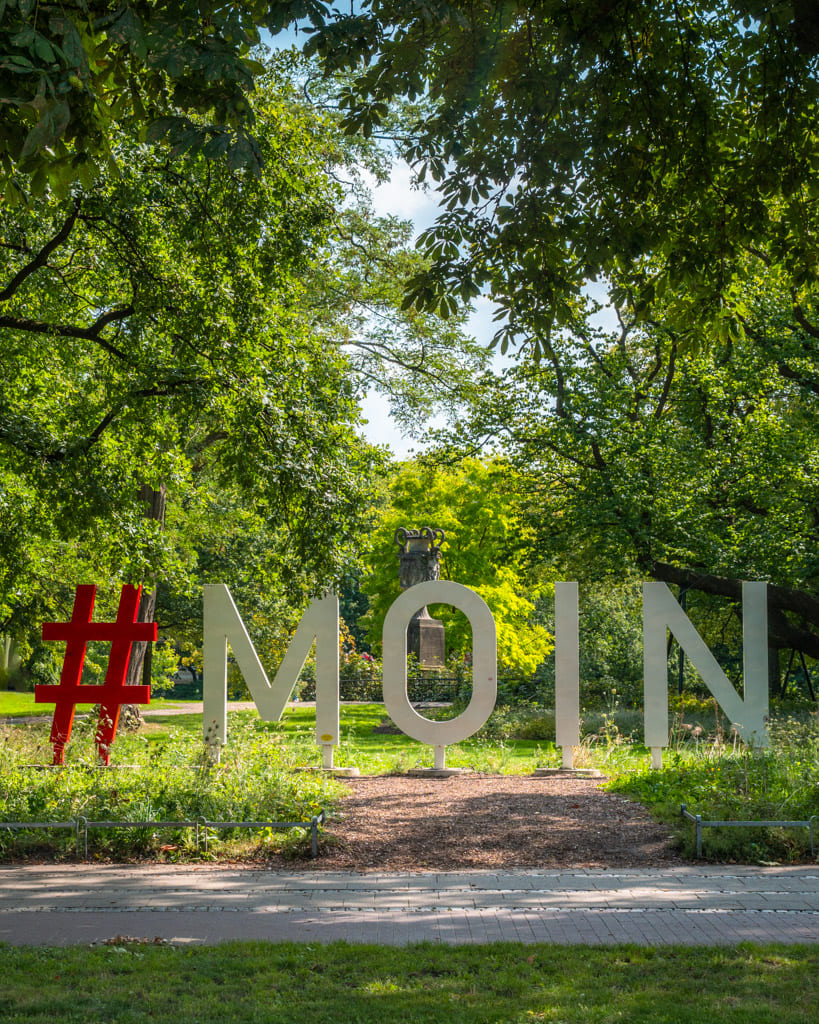
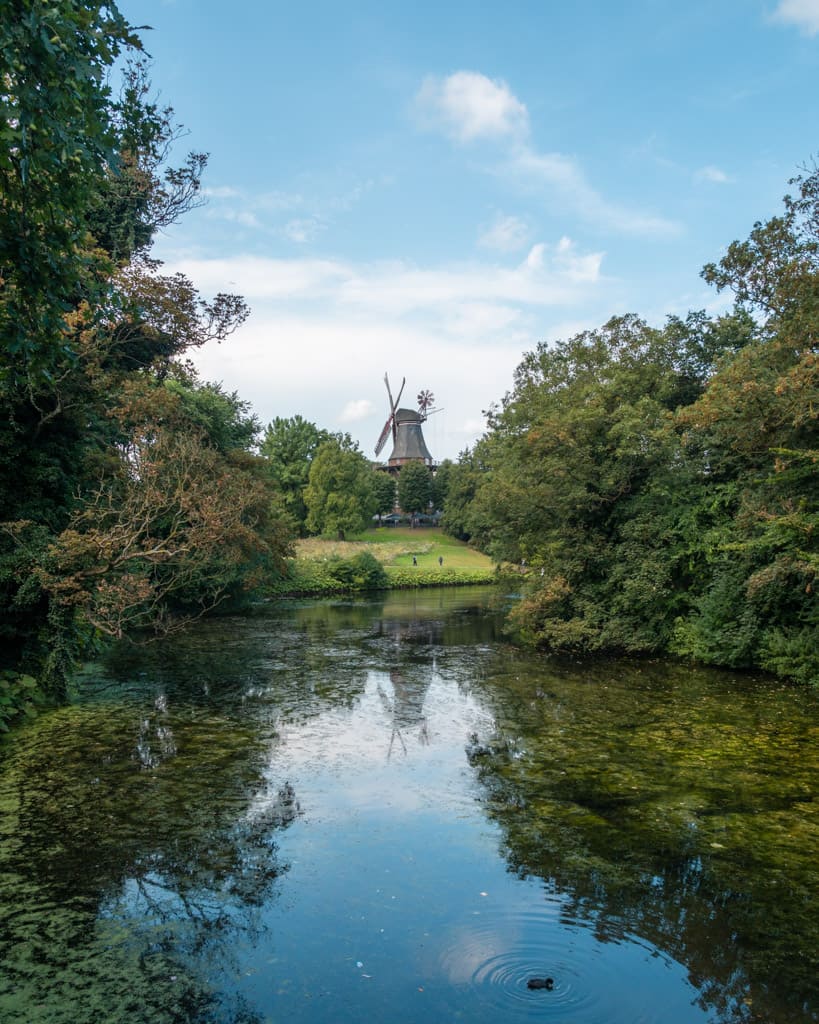

13. Mühle am Wall – Picturesque old windmill
The highlight of visiting Wallanlagen Park for us was seeing the Mühle am Wall – a charming old windmill that has become one of Bremen’s most recognisable landmarks.
While the mill used to be in use for grinding flour, it has now been turned into a café where you can enjoy the peaceful scenery in the park.
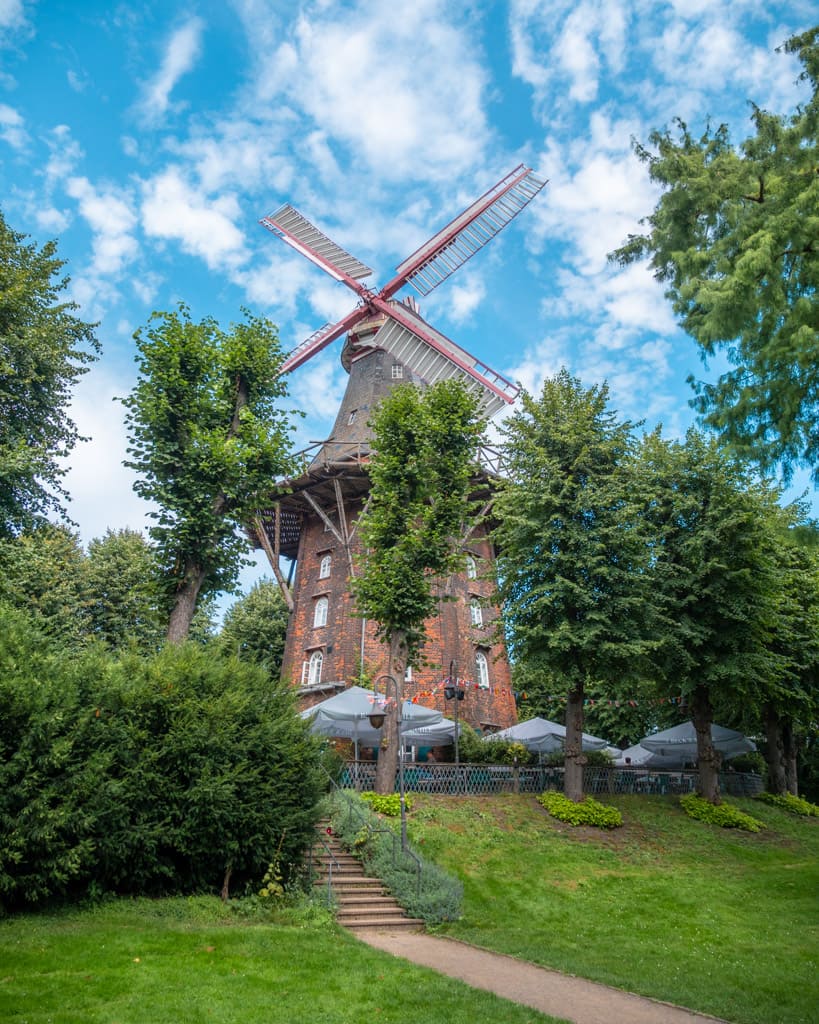

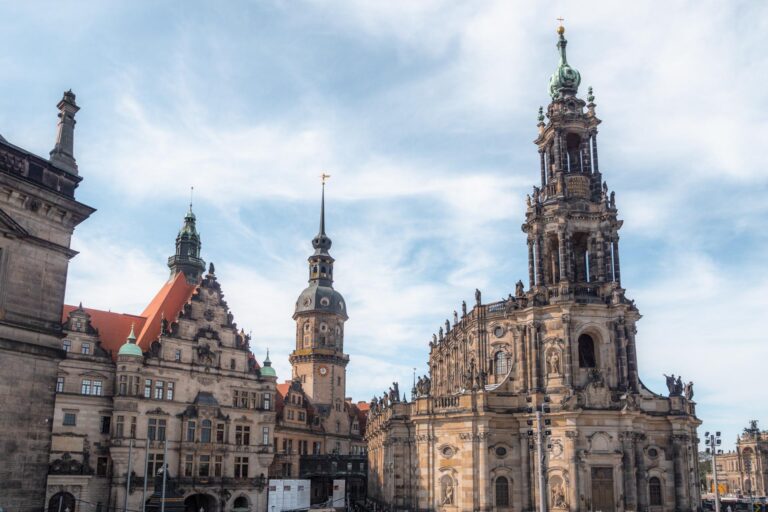
14. Bürgerpark – Bremen’s green heart
Not only is the very central Bürgerpark one of Germany’s larger urban parks, it even borders the Stadtwald forest making for a lot of green space.
The Bürgerpark itself features a plethora of walking paths, several playgrounds, a lake where you can rent a boat, a free mini “zoo” with mostly typical farm animals and lots more.
We were surprised to find such a huge wonderful park so close to the city centre and loved that the locals can get a nature fix and go feed the soul with some green therapy that easily.
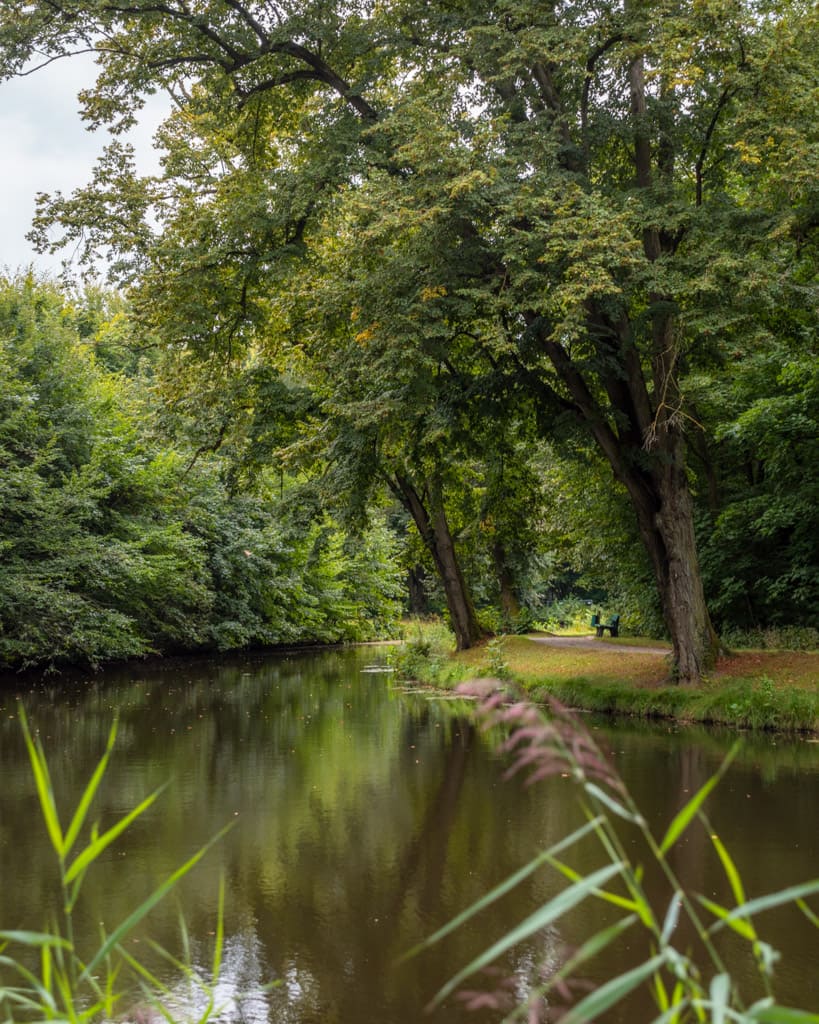

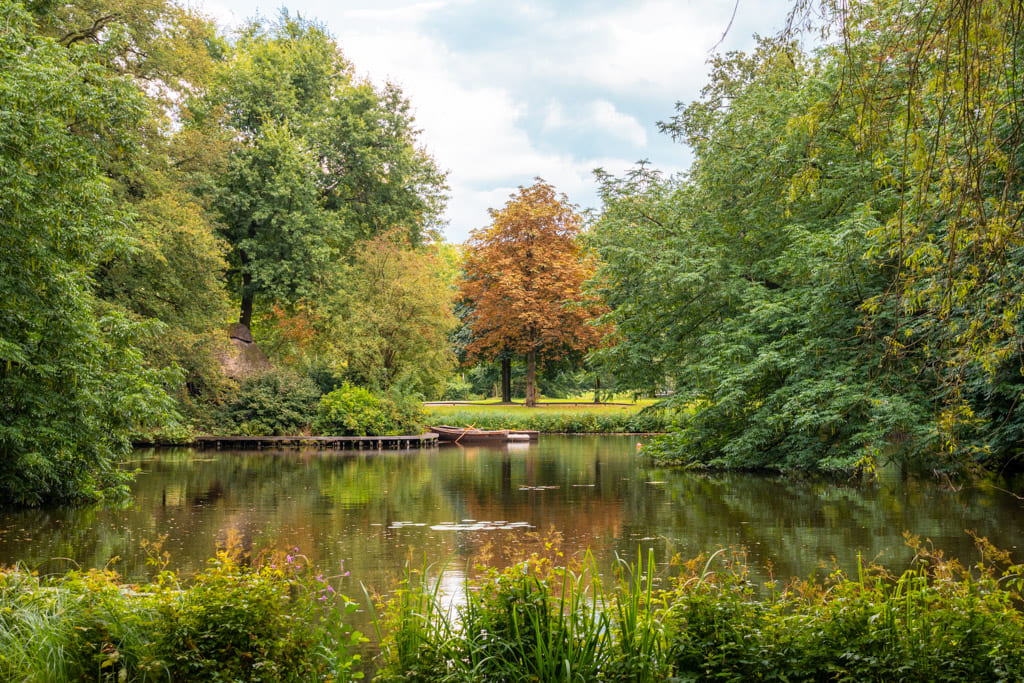
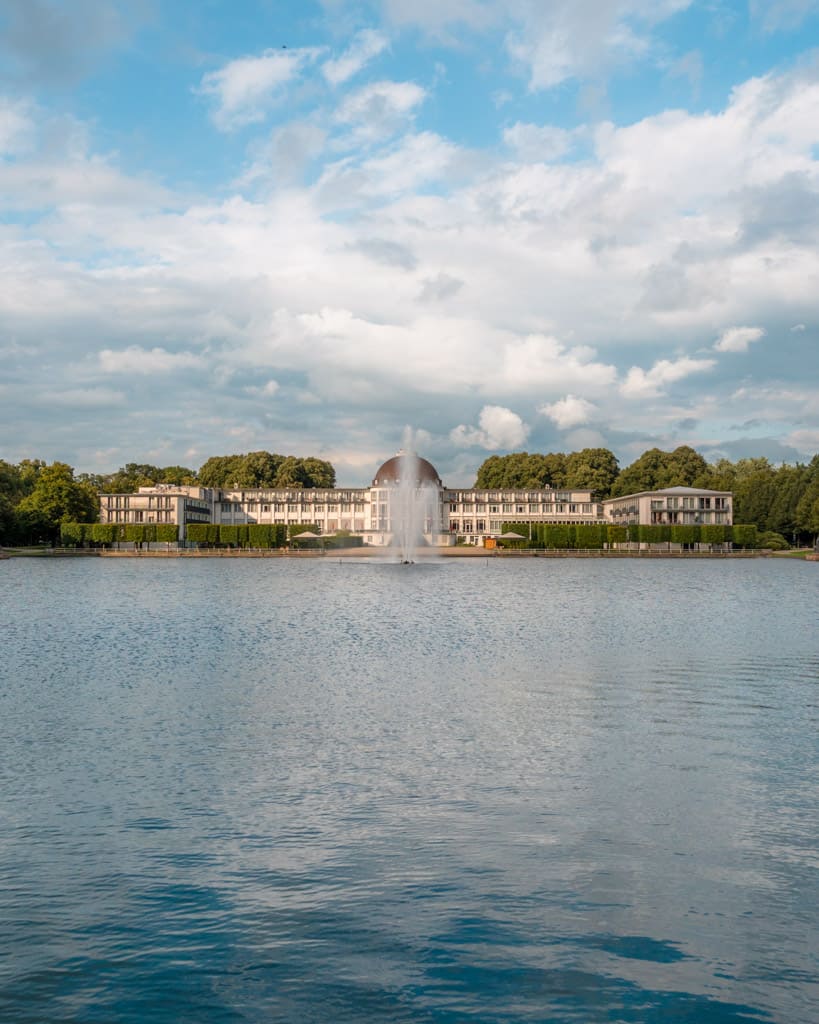
15. Botanika – Bremen’s World of Nature Discovery
One of the highlights of our time in Bremen was visiting the botanical gardens of Botanika – “Bremen’s World of Nature Discovery”.
Located inside the Rhododendron Park – which is worth a visit by itself – Botanika is built around showcasing the diverse plant life of different regions of Asia with a focus on rhododendrons.
Apart from the immersive landscapes, there’s a Japanese garden with a special Peace Buddha, a butterfly house as well as a discovery centre where you can learn all about the plant and animal kingdoms.
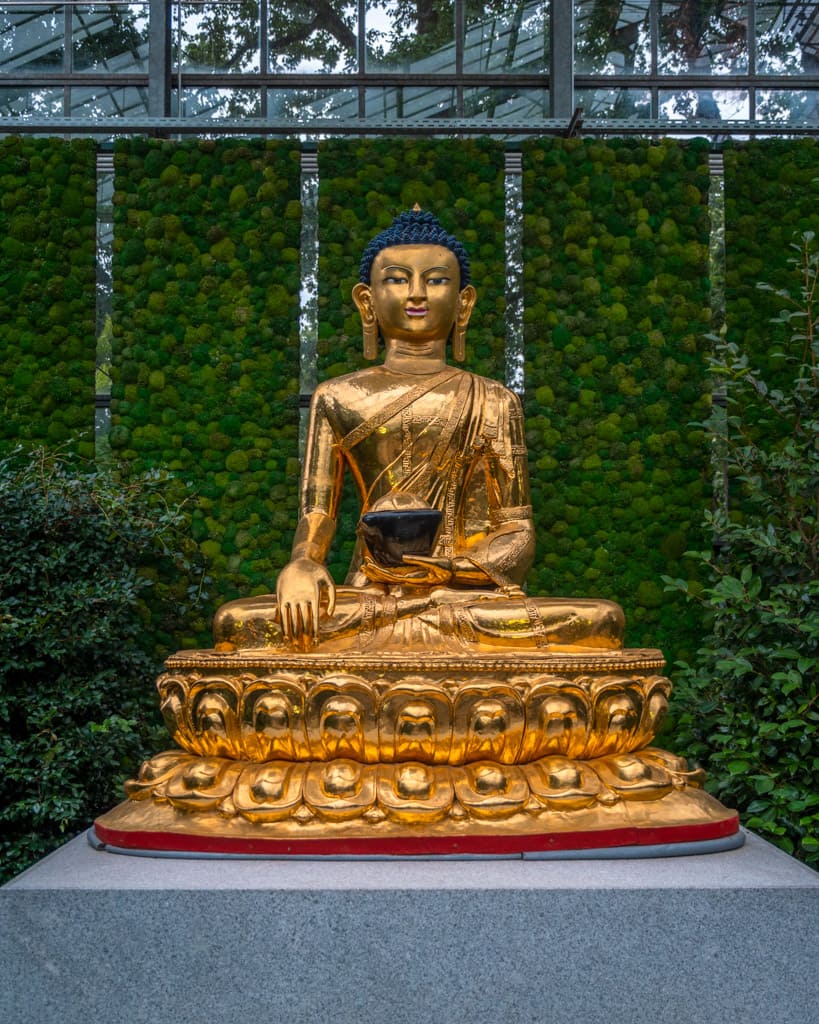


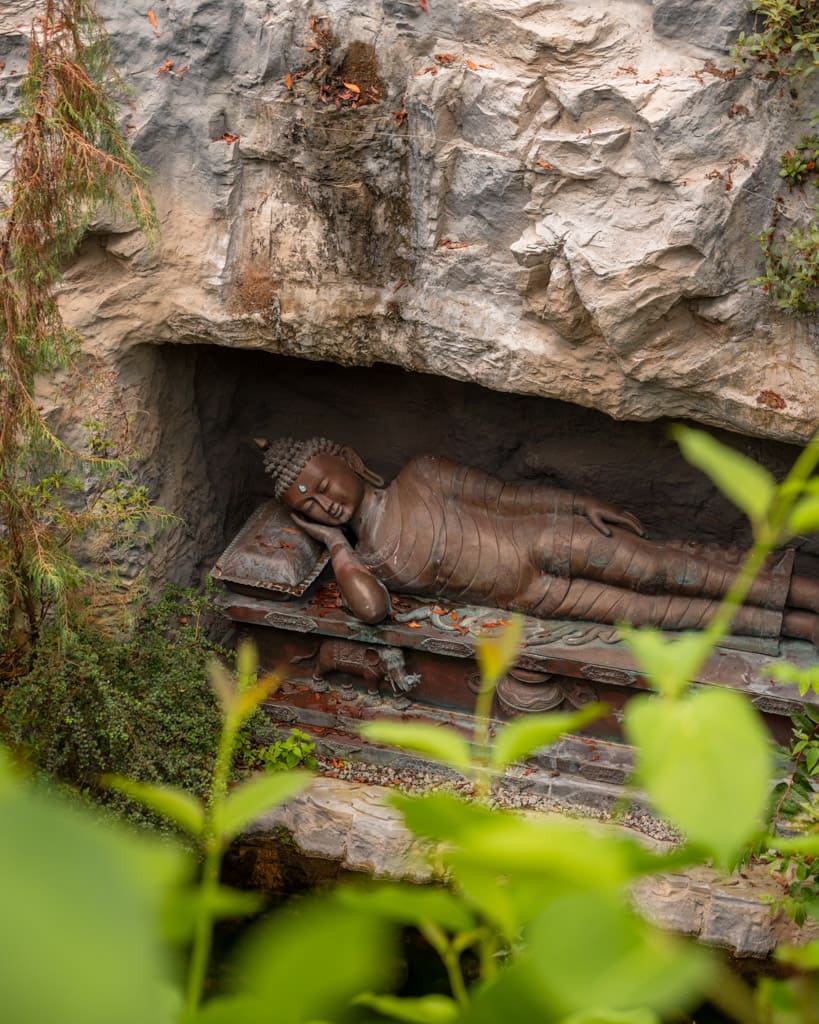
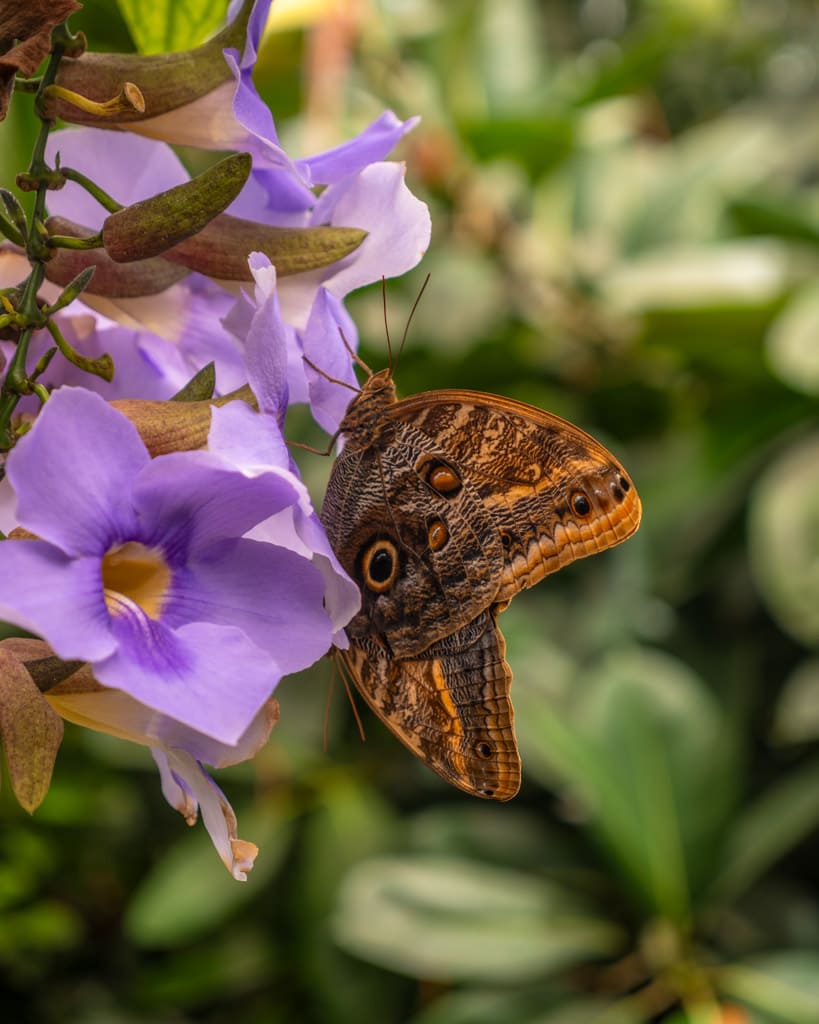
16. Coffee roastery tour – See how your coffee is made
We are big coffee enthusiasts. In fact, we made a documentary film about sustainable coffee a few years back.
Bremen being one of Germany’s (and Europe’s!) most important coffee cities, we were delighted to tour both the roastery of Münchhausen and the Johann Jacobs Haus.
Getting insight into the coffee roasting process is fascinating, so if you’ve ever wondered how your morning cup of coffee came to be, Bremen is a great place to learn more.
Fun fact: The original process of decaffeination was invented in Bremen.
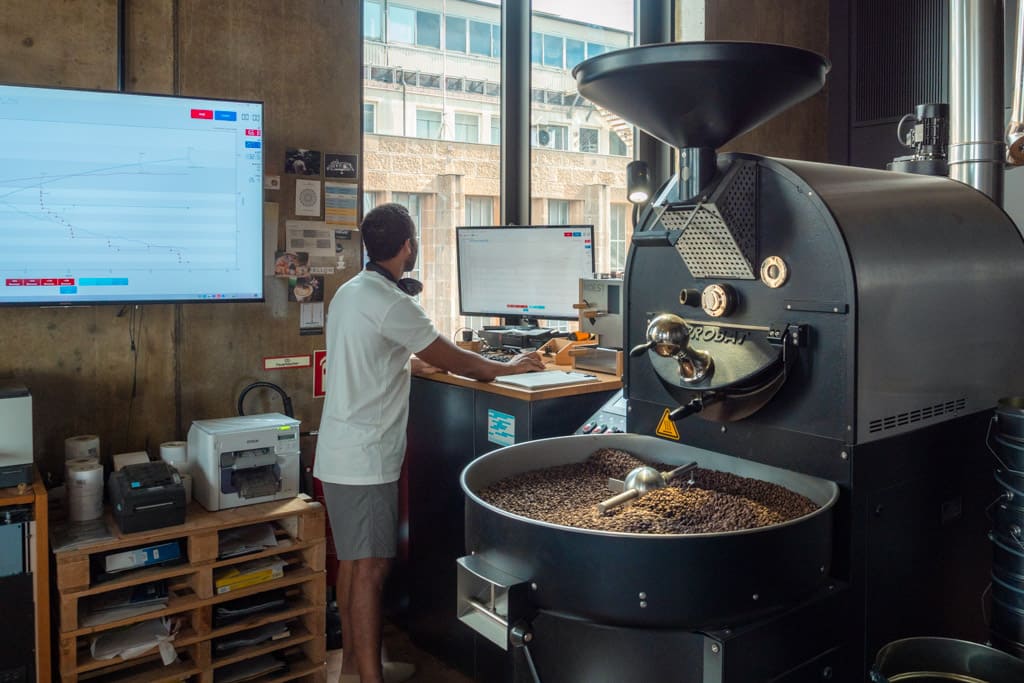
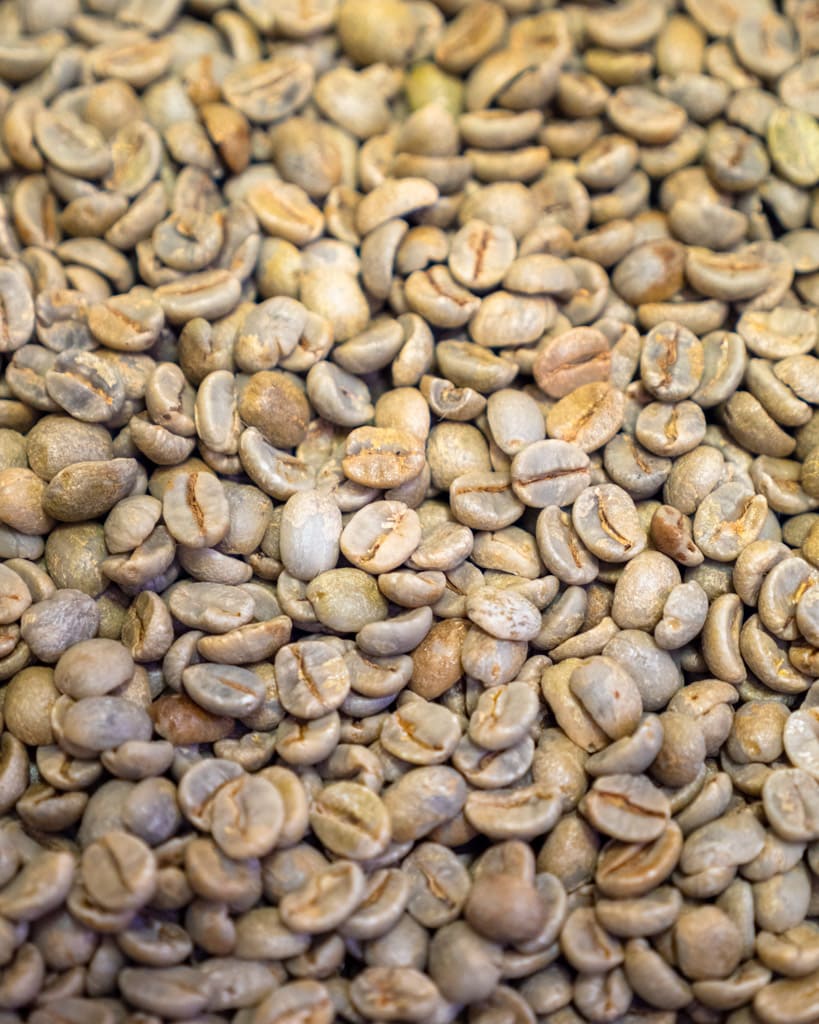
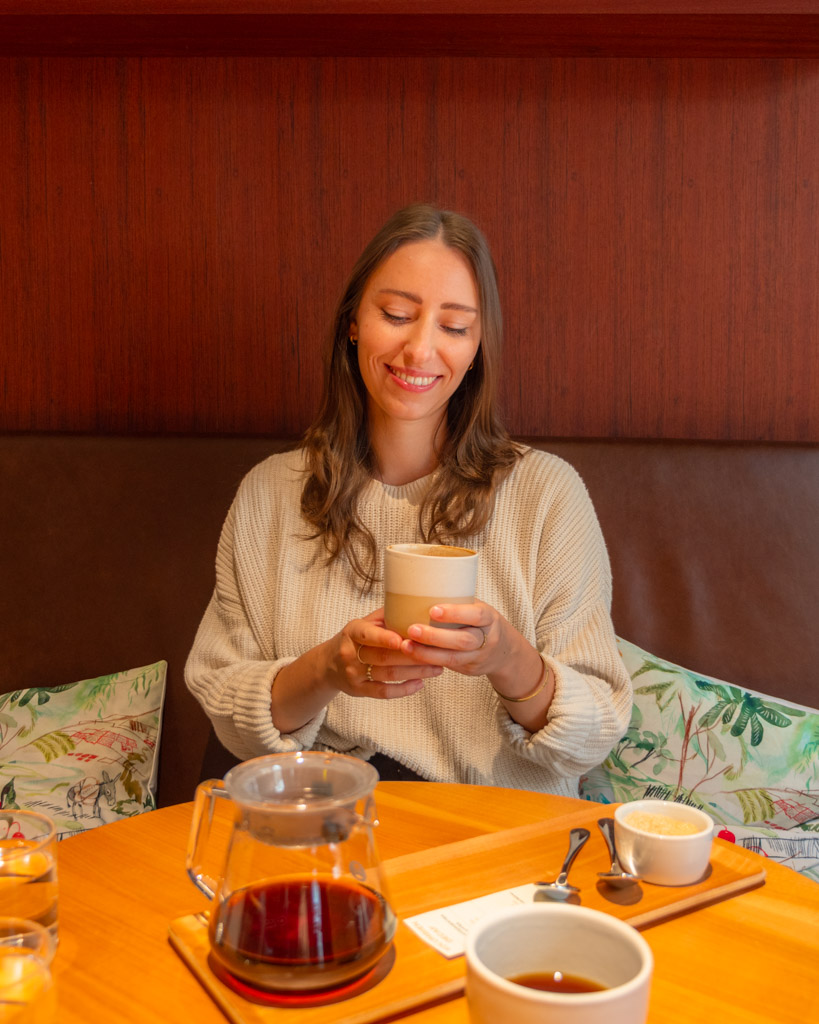
17. Universum Science Center – Interactive museum shaped like a whale
Universum Science Center, often just called Universum, is a cool museum (shaped like a whale!) at the eastern end of the Stadtwald.
Here you can learn all about physics and the universe, often with interactive experiments that kids will surely love. It’s also the perfect activity for a rainy day.
We unfortunately didn’t have the time to visit Universum this time around, but hopefully next time!
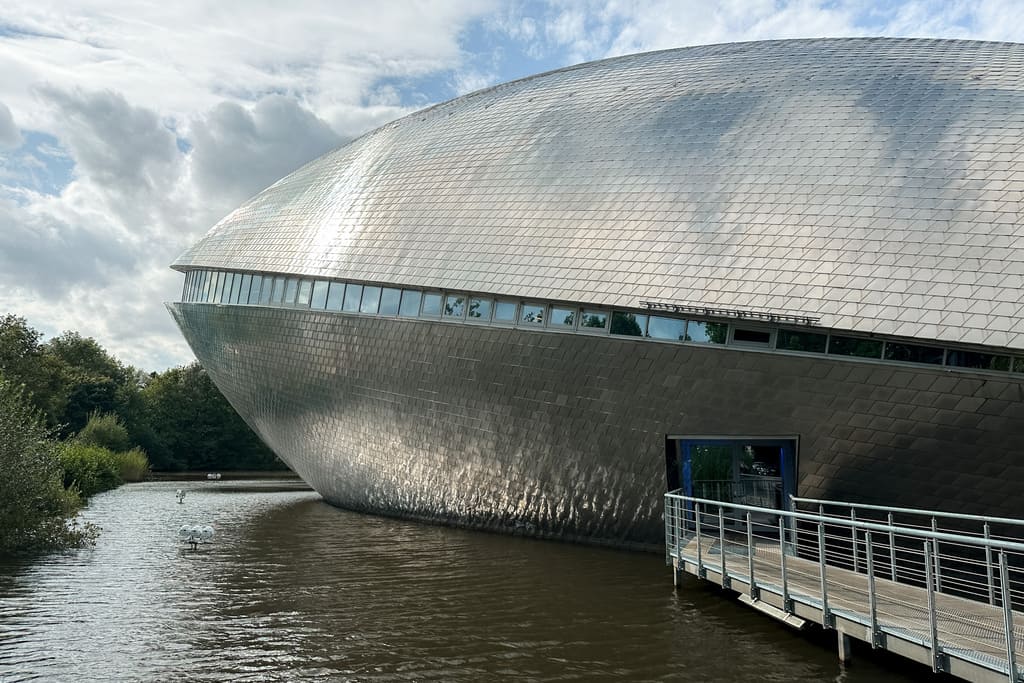
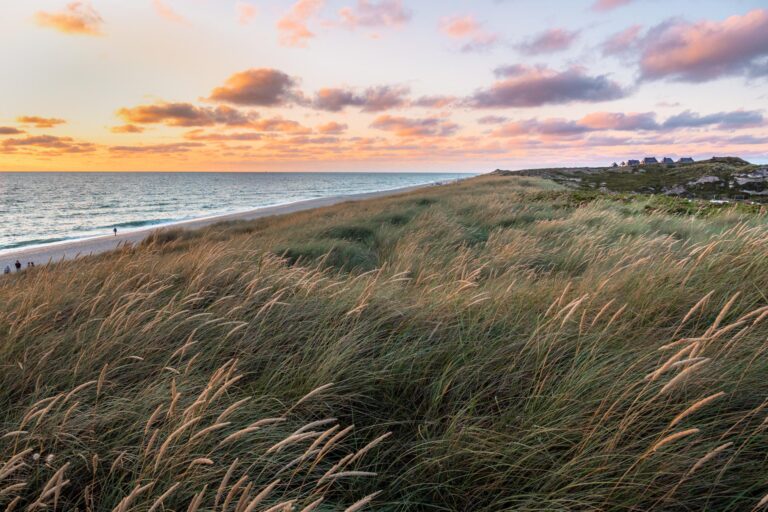
18. Theater am Goetheplatz – Musicals, dramas and operas
Theather am Goetheplatz, also called the Goethetheater, is a theatre showing musicals, dramas and operas.
Built in the neoclassical style, it’s one of the oldest buildings in Bremen.
If you’re looking for a cultural experience, you can explore the lineup of performances at the theatre on your travel dates.
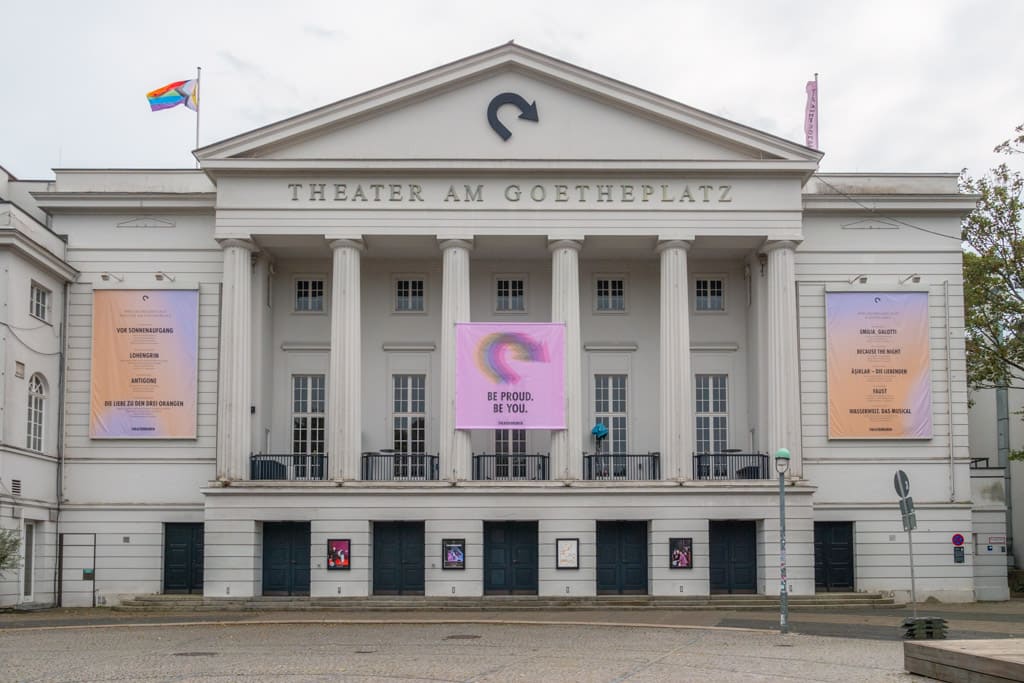
19. Kunsthalle Bremen – Art museum with European art
Right across the street from Theater am Goetheplatz you’ll find Kunsthalle Bremen – an art museum with an impressive collection of European art including works by artists like Van Gogh, Picasso and Monet.
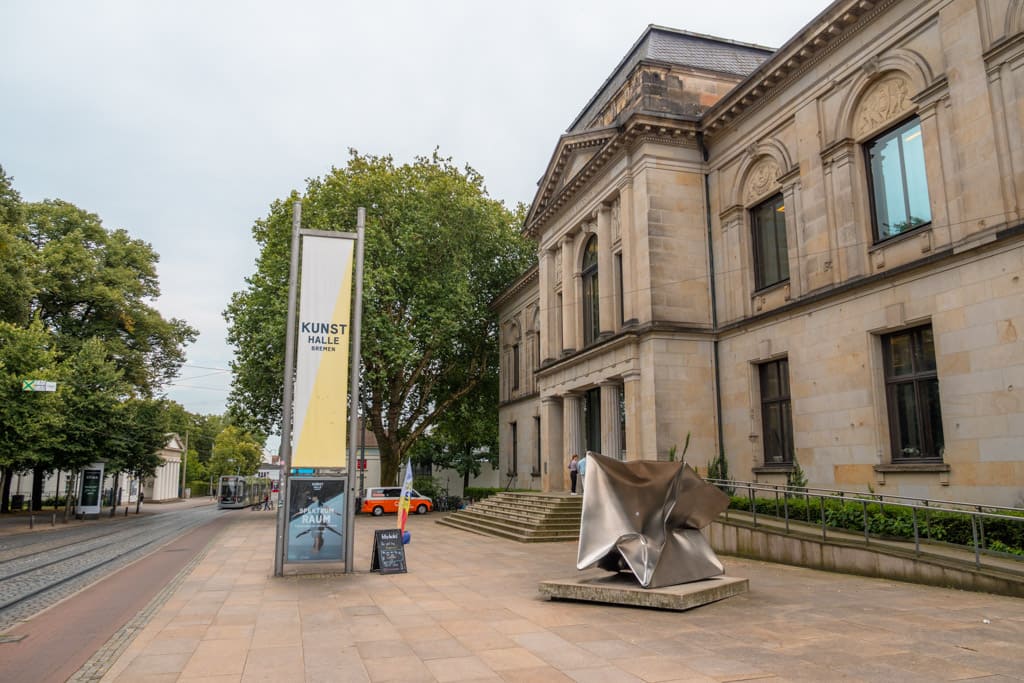
20. Tour a beer brewery – Learn all about beer
As Bremen is a famous beer city, it’s a great place to go on a tour of one of its international or craft breweries.
We aren’t huge beer drinkers ourselves (and had our 1-year-old with us) so we skipped touring a brewery but it looks fun if you want to know more about beer and how it’s made.
21. Übersee-Museum Bremen – A natural history museum
Located right next to the central station in Bremen, this museum combines ethnography, trade and natural history under one roof.
It looks like it offers fascinating exhibits from around the world with a focus on global cultures and ecosystems.
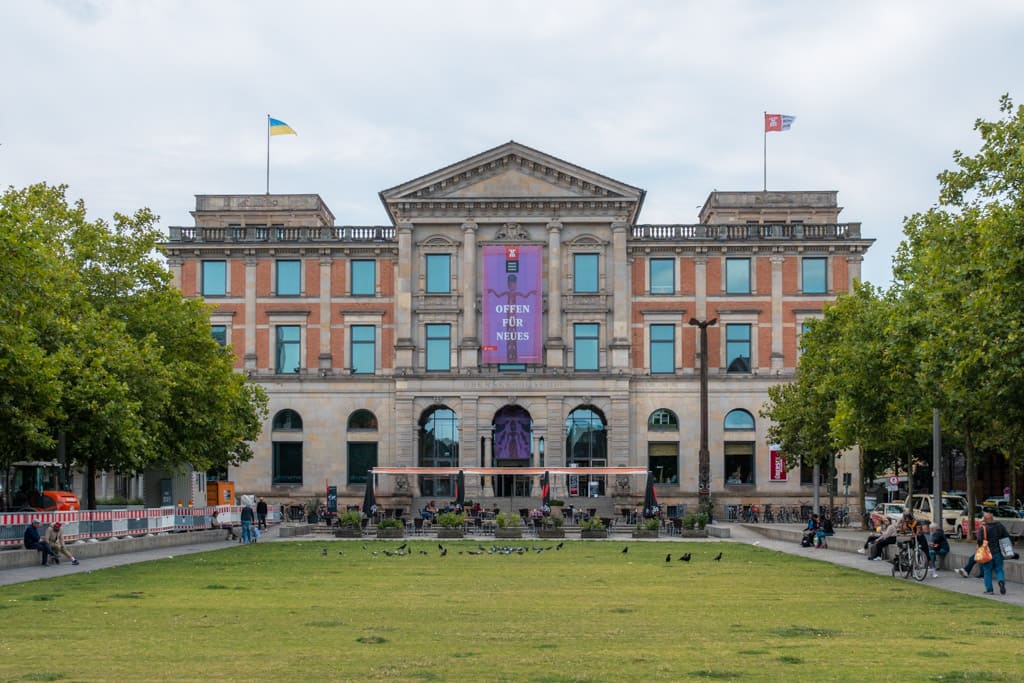
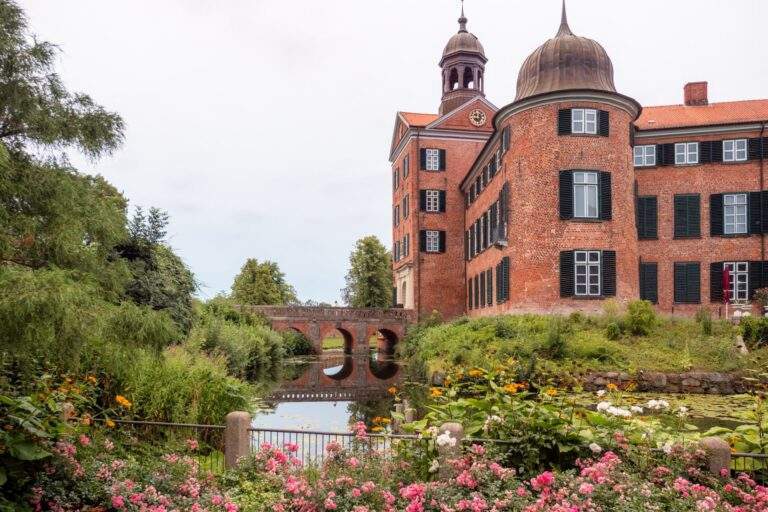
How to get around Bremen
Bremen’s city centre (Mitte) is fairly compact, making walking the most convenient way to explore. It’s both easy and safe.
For context, a walk around the city centre following the waterfront and moat covers about 4 kilometres and takes around an hour.
Bicycling is also a great way to get around.
For longer stints or to save some time, Bremen’s trams are a very comfortable option.
Tickets can be bought on the trains. Consider the all-day or weeklong options if you intend to use the tram and bus system a lot.
Driving your own car around Bremen is mostly unadvisable – unless you have easy access to parking at your accommodation and are going a bit further away to Botanika or similar.
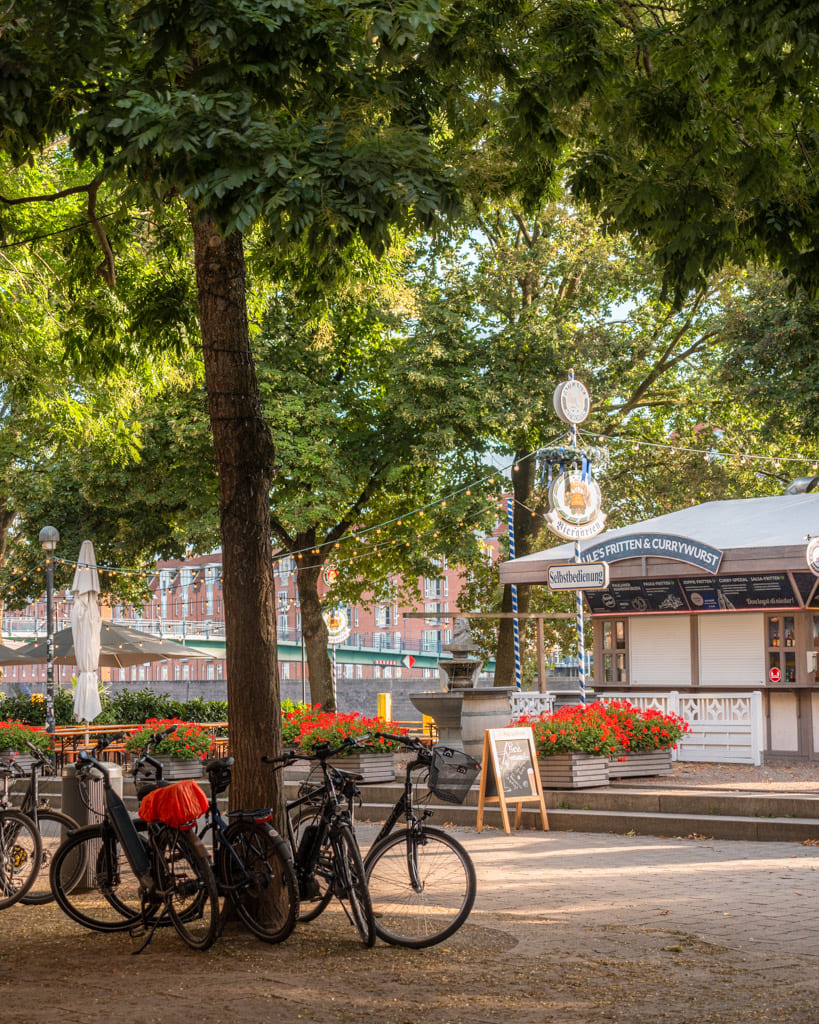
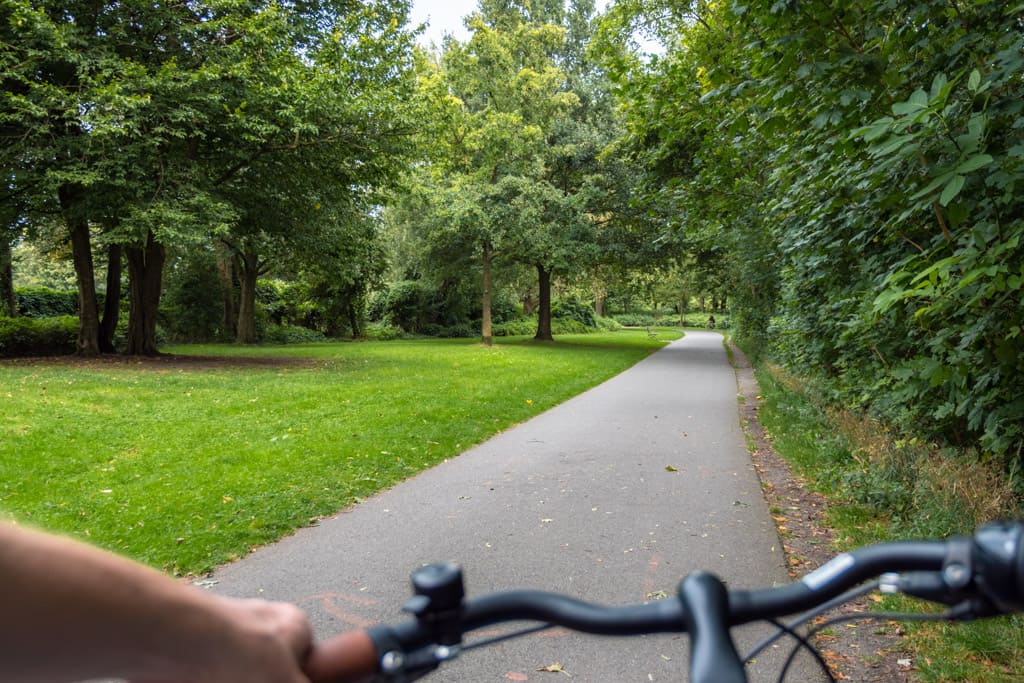
How to get to Bremen
Car to Bremen
Bremen is well connected to the German autobahn system (national motorways). That means it’s easy to get here by car from all over Europe.
Travelling from Hamburg, take the A1 Autobahn southwest towards Bremen and you will arrive in about an hour and 15 minutes.
Be aware that cars on the autobahn generally drive fast – and by fast, we mean up to 200 km/h!
There are several sections with no speed limit at all so it’s important to look thoroughly in the rearview mirror and side mirror before changing lanes and overtaking.
Take the train to Bremen
Bremen is well connected to the German train network.
A direct train from Hamburg Central Station (Hamburg Hauptbahnhof) to Bremen takes about 1 hour, with trains departing roughly every 30 minutes during the day.
From Hannover, the journey also takes about an hour, while a trip from Berlin (via Hannover) takes approximately 3 hours.
We have previously used the Deutsche Bahn website to order train tickets and they’re very reliable.
Flights to Bremen
Bremen has its own airport, Bremen Airport (Flughafen Bremen). Year-round, there are flights to cities such as Munich, Vienna and London. Additionally, seasonal flights connect Bremen to other destinations across Europe.
Nearby Hamburg Airport (Flughafen Hamburg) is much much bigger and very well-connected both nationally and internationally.
Getting to Bremen from Hamburg Airport is easy. Just hop on the S-Bahn (suburban rail network) line S1 to Hamburg’s central railway station. It runs every 10 minutes and takes less than half an hour. From there, you can take a train to Bremen as described above.
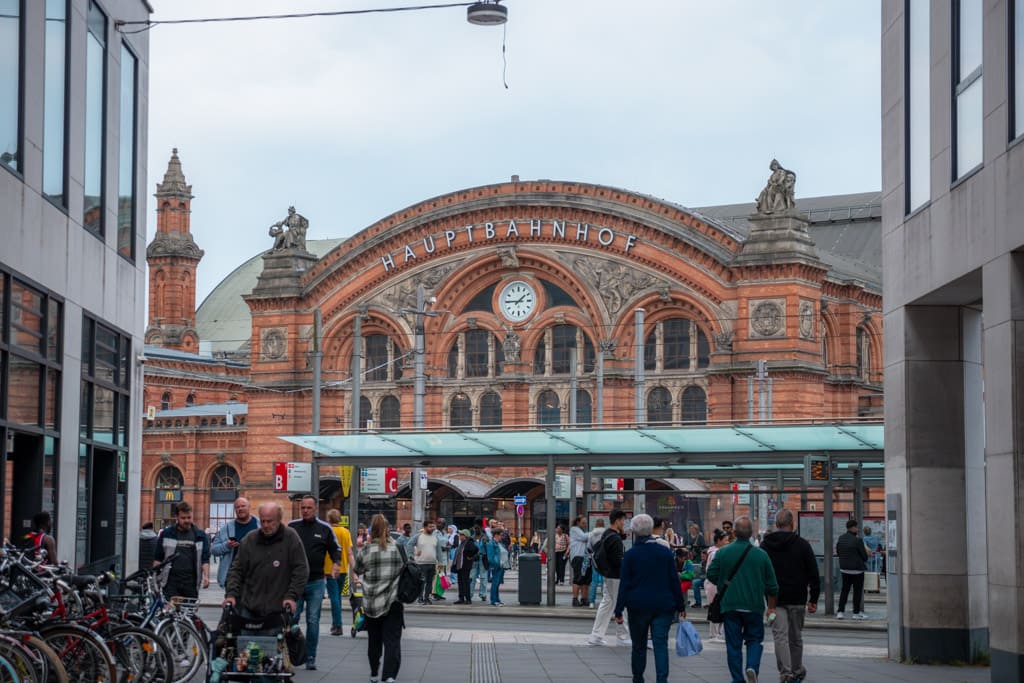
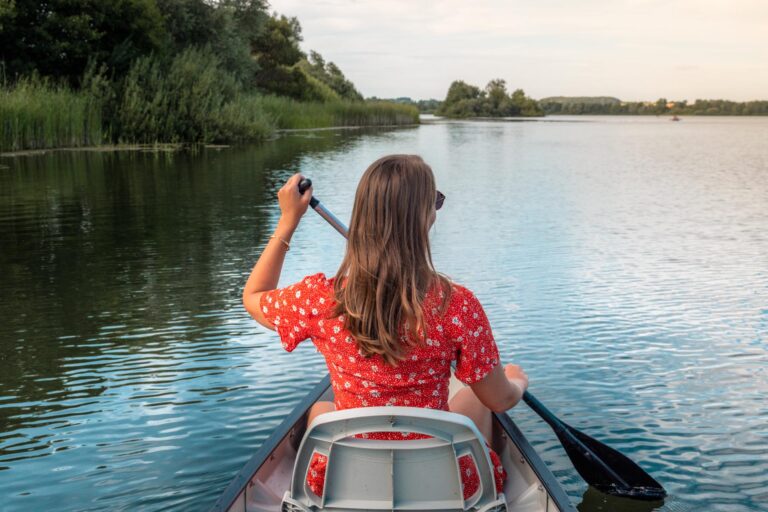
When to visit Bremen
There’s no bad time to visit Bremen, though each season offers a different experience. So, when is the best time to go?
We visited Bremen in August and enjoyed warm, sunny days – ideal for exploring.
As with most popular destinations, it’s wise to plan your trip outside the busiest holidays, if possible. Visiting during the shoulder seasons lets you avoid the largest crowds and find cheaper accommodation.
Don’t worry too much if traveling outside the holidays isn’t an option as Bremen rarely feels overcrowded.


Seasons
Spring (March, April and May) is a beautiful time to visit Bremen with sunny days and blooming flowers. It can still be a bit chilly, so check the weather forecast before you pack.
Summer (June, July and August) is of course the hottest season and the temperatures can get quite high in July and August. At the same time, it’s also at its rainiest in the summer so pack a rain jacket or an umbrella, just in case. The sun is usually shining from early morning until very late in the evening. The summer holidays in Germany are spread out between mid-June and mid-September.
Autumn (September, October and November) is a wonderful time to visit Bremen. The autumn colours go well with the old, charming buildings in the city. The most beautiful yellow, orange and red autumn colours can typically be seen at the end of September and in October, perhaps also at the beginning of November before the leaves fall off the trees.
Winter (December, January and February) is generally cold but on the other hand, there are usually fewer tourists. If you’re planning to visit during Christmas or New Year, it’s smart to book your accommodation ahead of time.
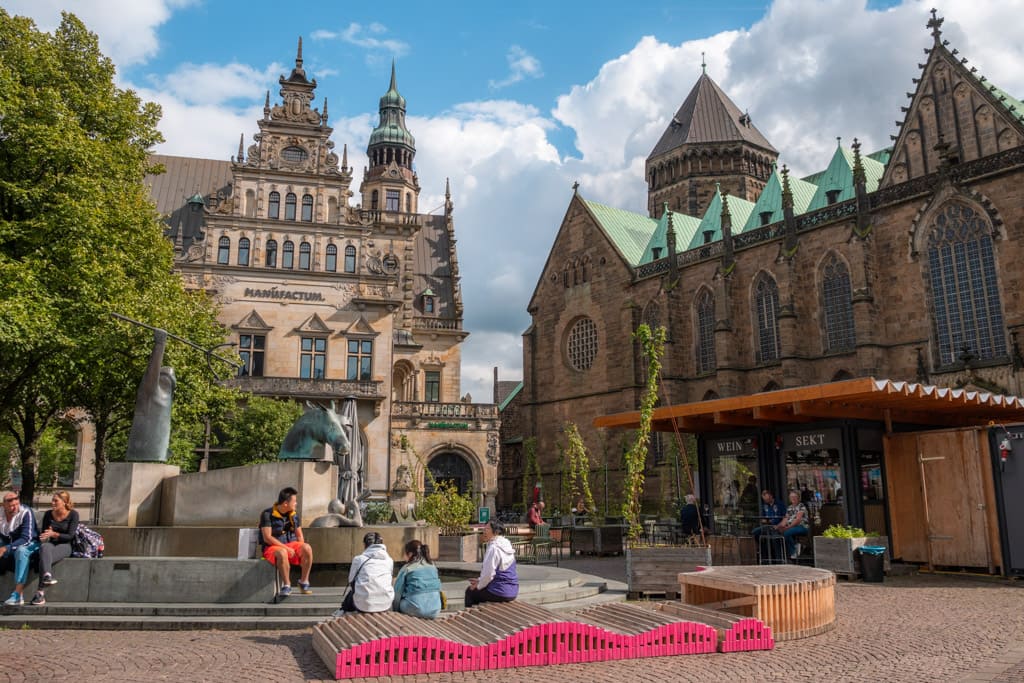
Tips for visiting Bremen
- Credit cards can be used in most shops, but as in the rest of Germany, cash is still often used and it’s not unusual for cash to be used in parking and ticket machines, at cafés and the like.
- Get up early and be one of the first at an attraction if you want to avoid long queues in the high season.
- Drink tap water. It’s not only good for the planet, it’s also good for your wallet. The tap water in Bremen is absolutely safe to drink – so bring a refillable bottle.
- Travel to Bremen outside of the holidays. Accommodation prices are lower, good deals are easier found and there are fewer tourists.
- Walk, walk and walk some more. Walking around Bremen is free, easy and simply the best way to get around. And you’ll probably find many hidden gems along the way.

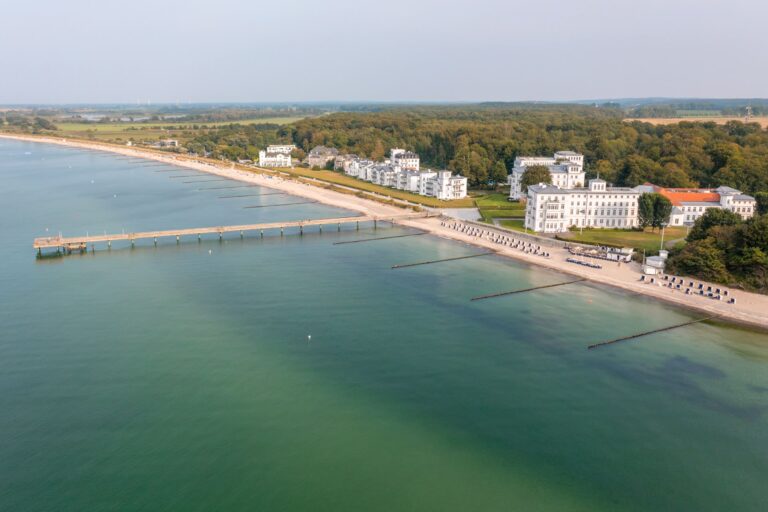
What to bring to Bremen
- Travel insurance (adlink). Never travel without it!
- A good camera – here’s a guide to the gear we use.
- Sunscreen (adlink). Especially if you visit Bremen in the summer. We recommend that you use an organic, vegan sunscreen without oxybenzone and other harmful chemicals.
- Hiking shoes, sneakers, sandals or other shoes you can walk in comfortably.
- Swimwear if you are staying at a hotel with a spa area.
- A refillable water bottle and snacks. You can drink the tap water in Germany.
- Cash for parking and other small purchases, especially 1 and 2-euro coins. Not all places in Germany accept credit cards.
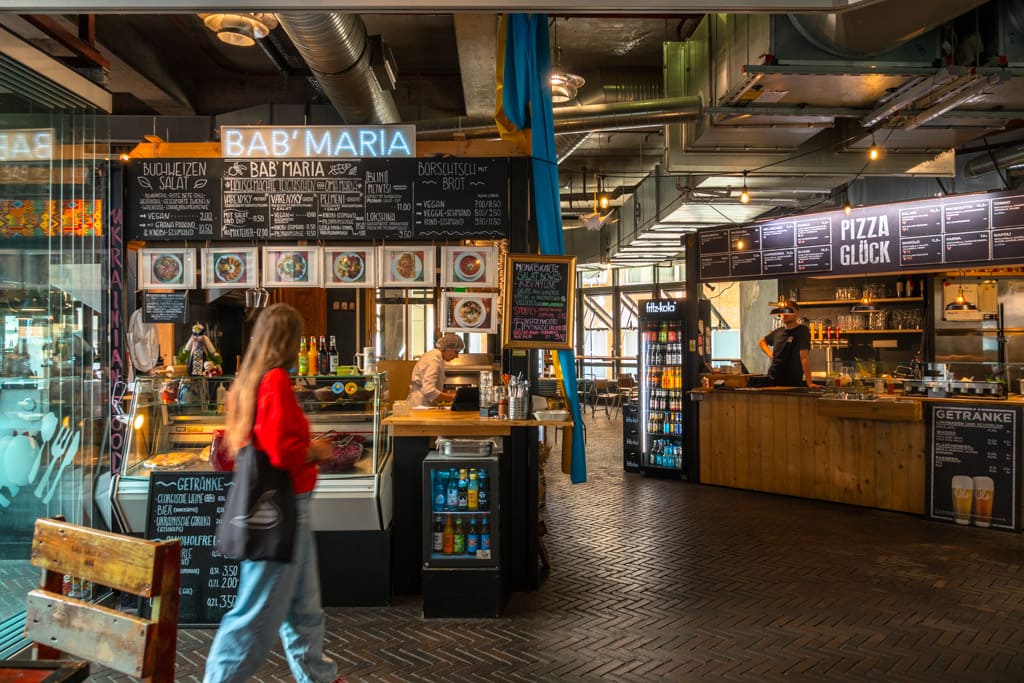
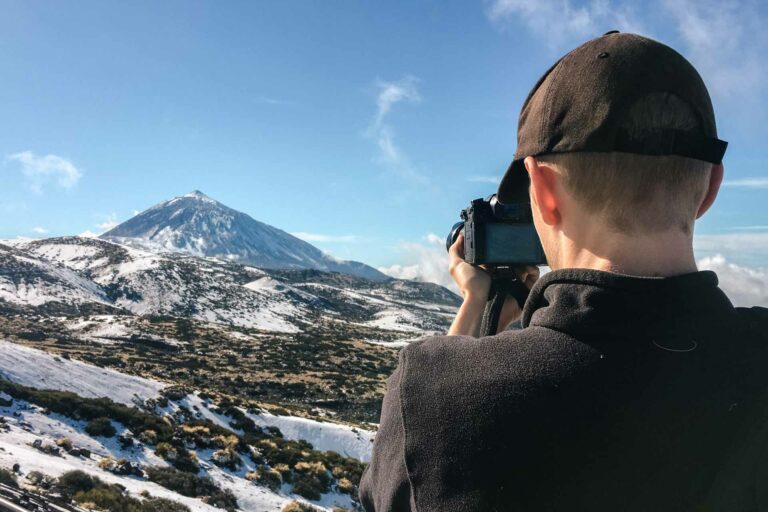
Thanks for reading
Thank you for reading our travel guide to Bremen. We hope it has been helpful!
What do you think about the city?
If you’ve been to Bremen, it would be awesome to hear your best tips and tricks.
If you haven’t been yet, please don’t hesitate to ask us anything in the comments below. We’re happy to help.
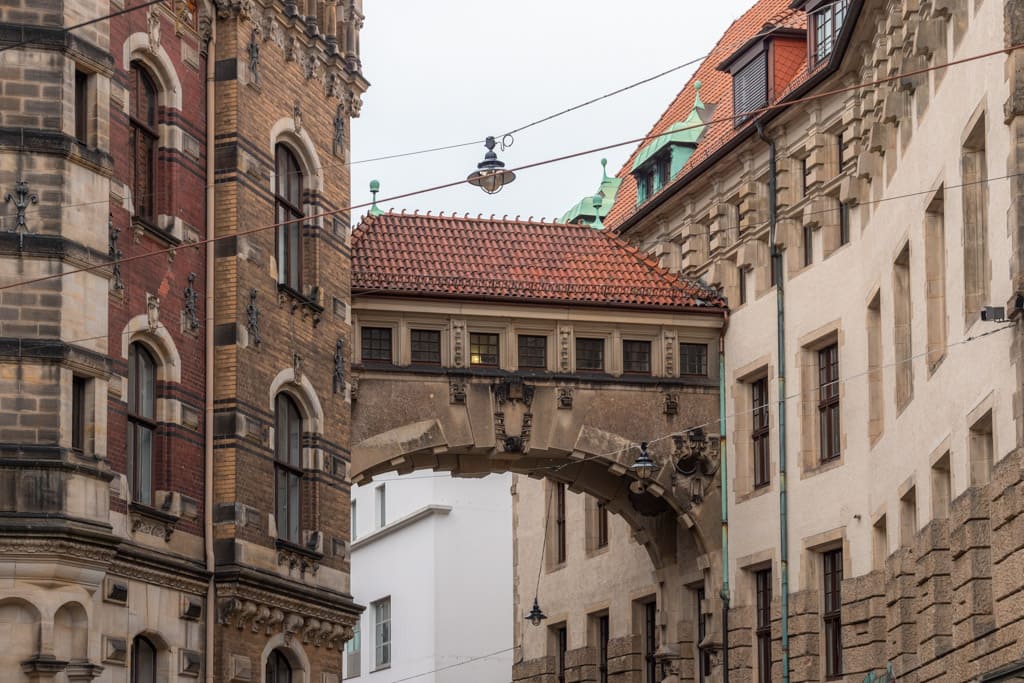
Our favourite travel resources:
- Booking.com for cheap hotels.
- Momondo for the best flight deals.
- SafetyWing for travel insurance. We also like World Nomads and True Traveller. All three compared here.
Our camera gear:
- Panasonic GH5. Used for all of our photos and videos.
- DJI Mavic 2 Pro. Best drone out there!
- Sirui Tripod. Lightweight and strong.
- See all of our camera gear here.

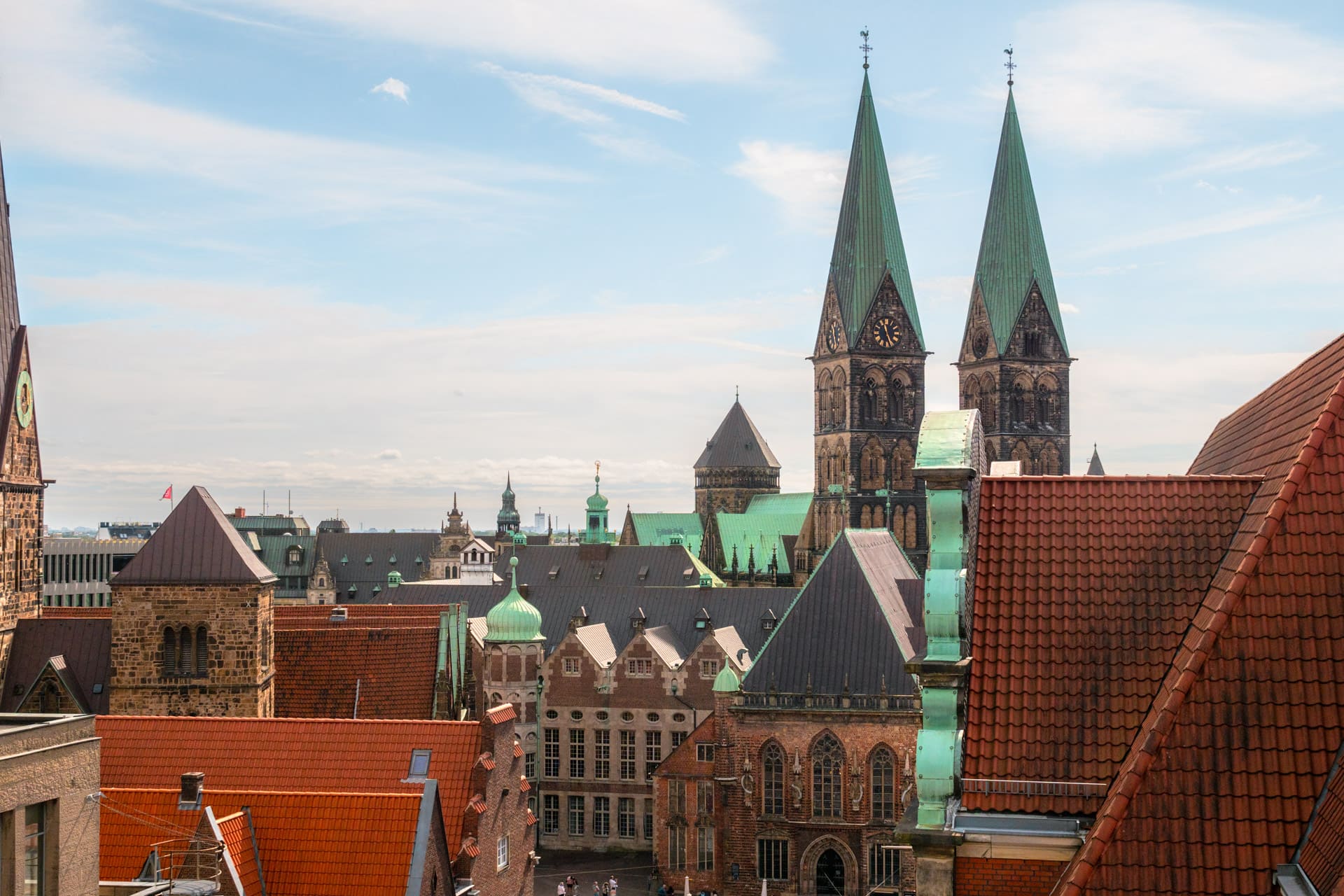


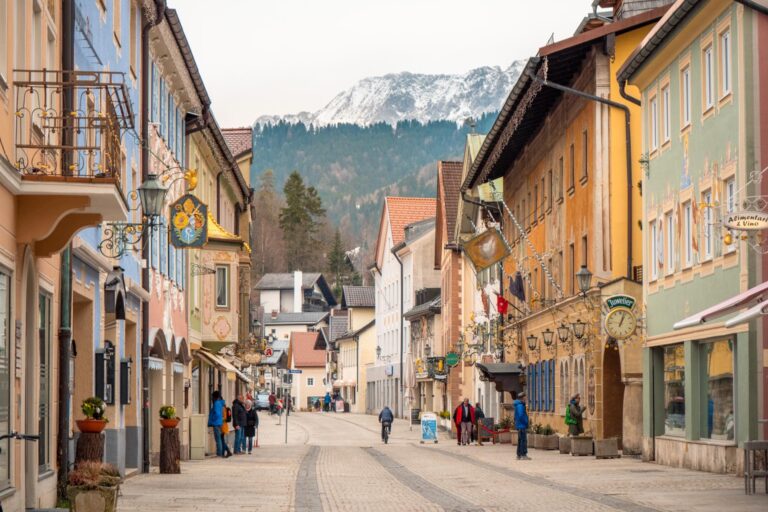
 Book cheap hotels
Book cheap hotels  Find the best flight deals
Find the best flight deals  Nomad insurance
Nomad insurance  Our Camera Gear
Our Camera Gear Our Packing List
Our Packing List